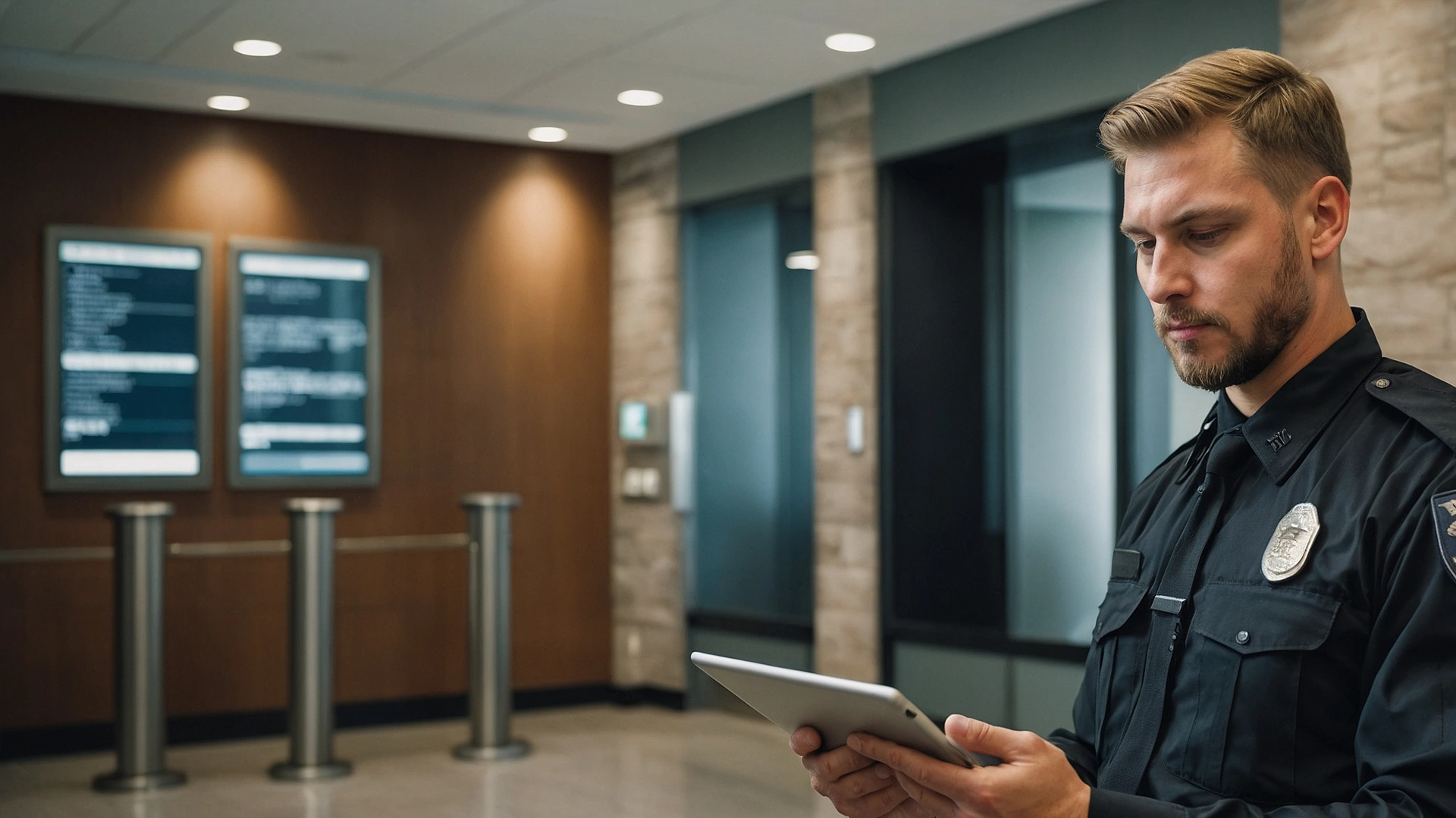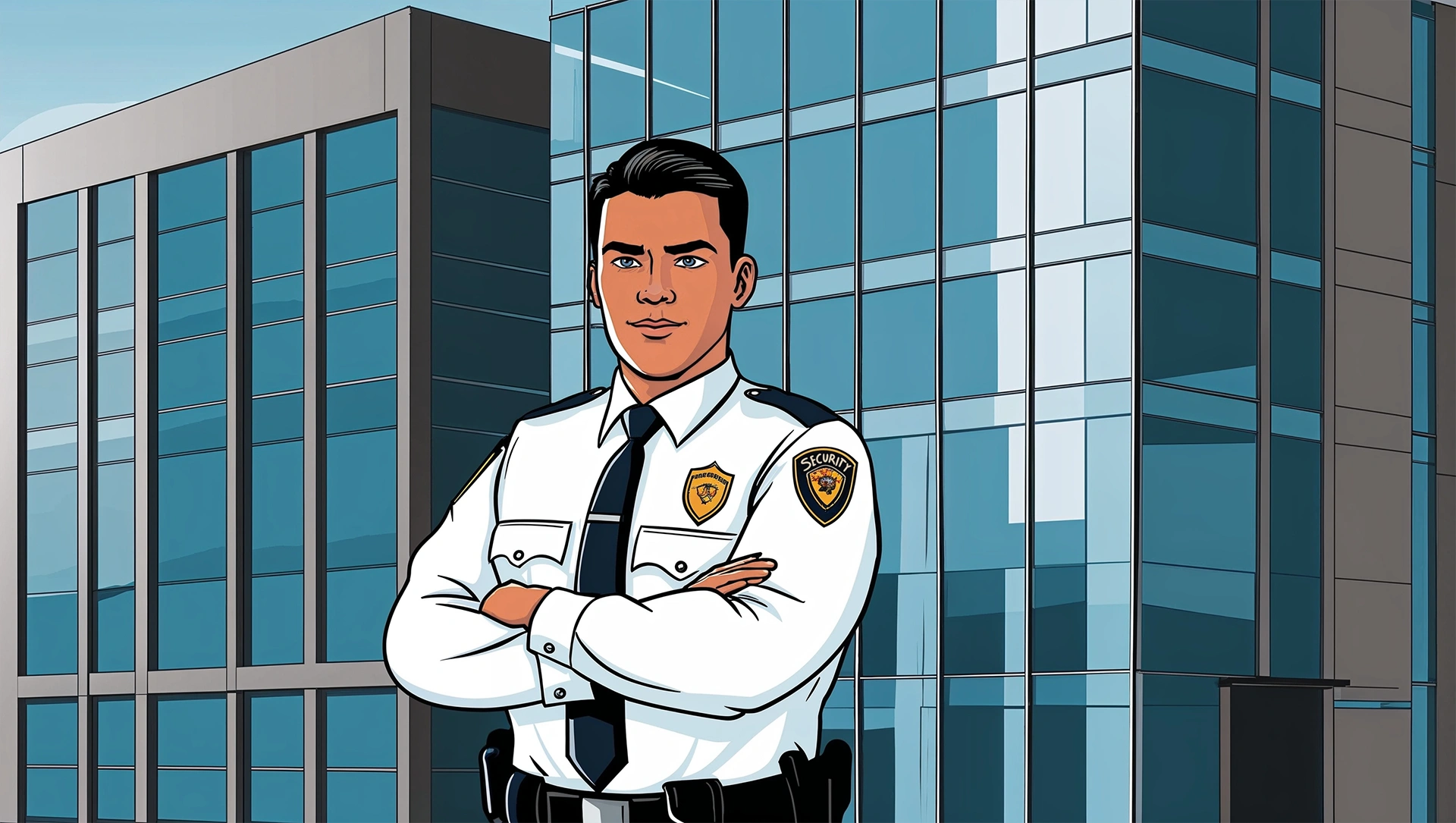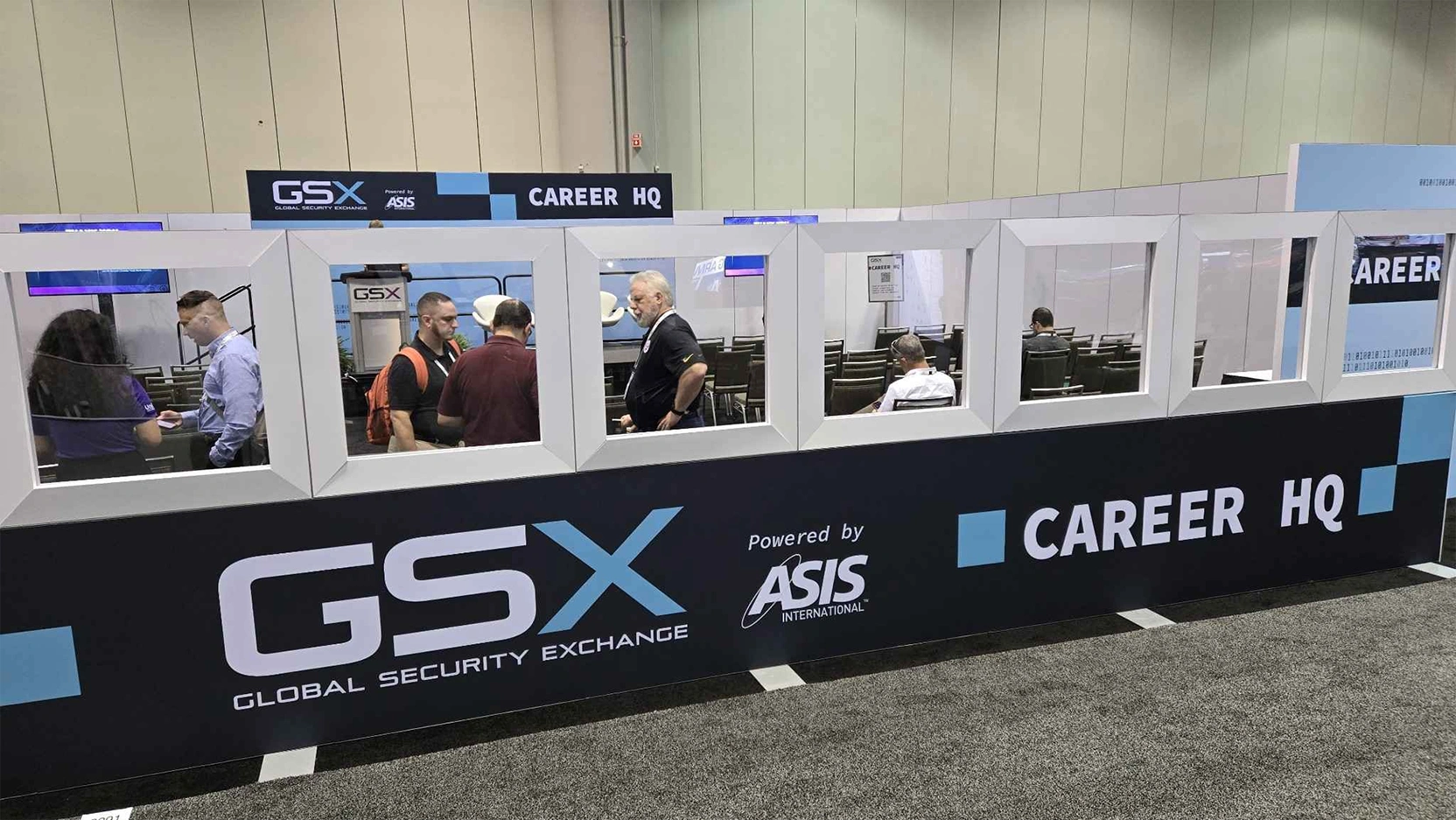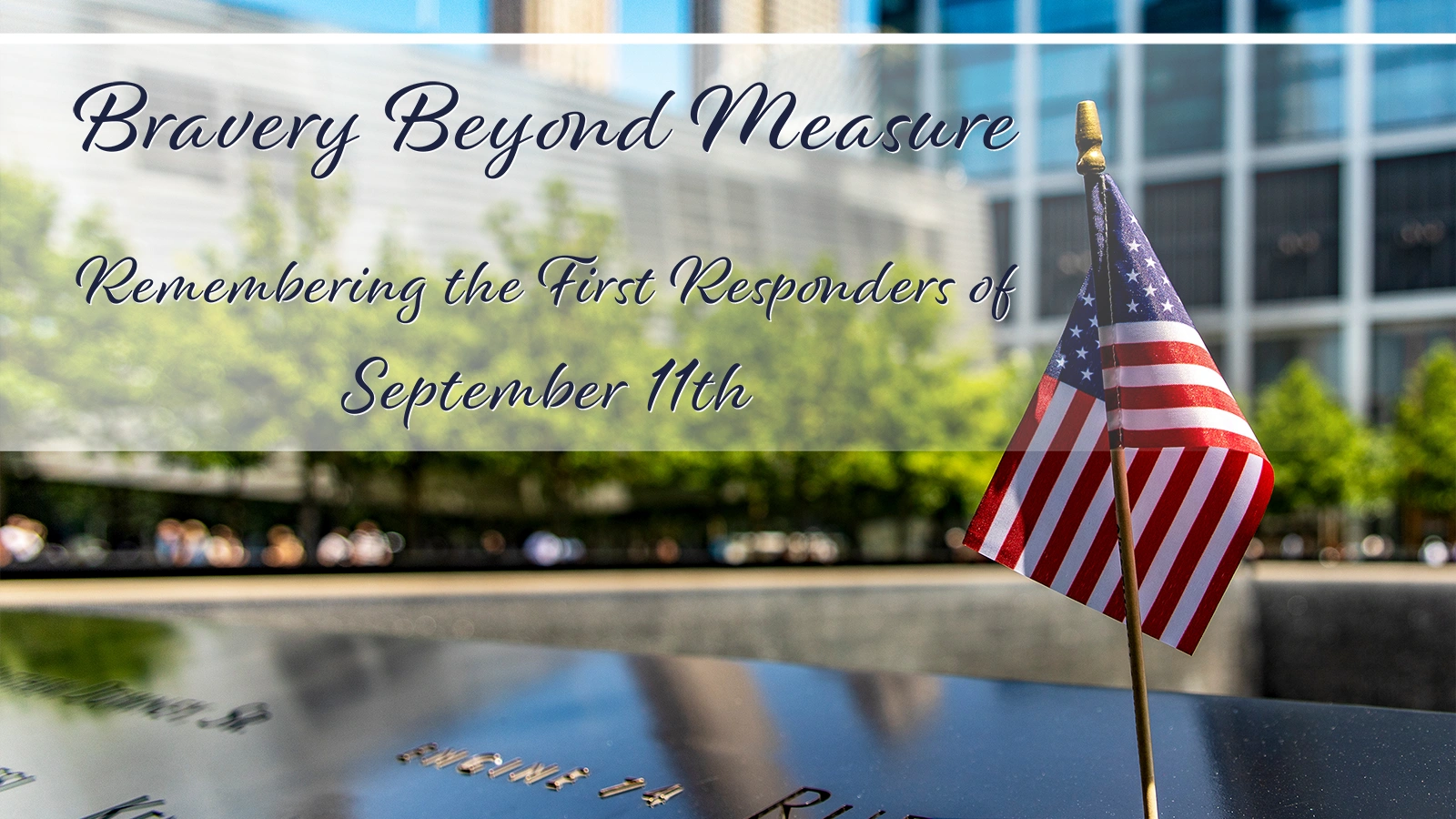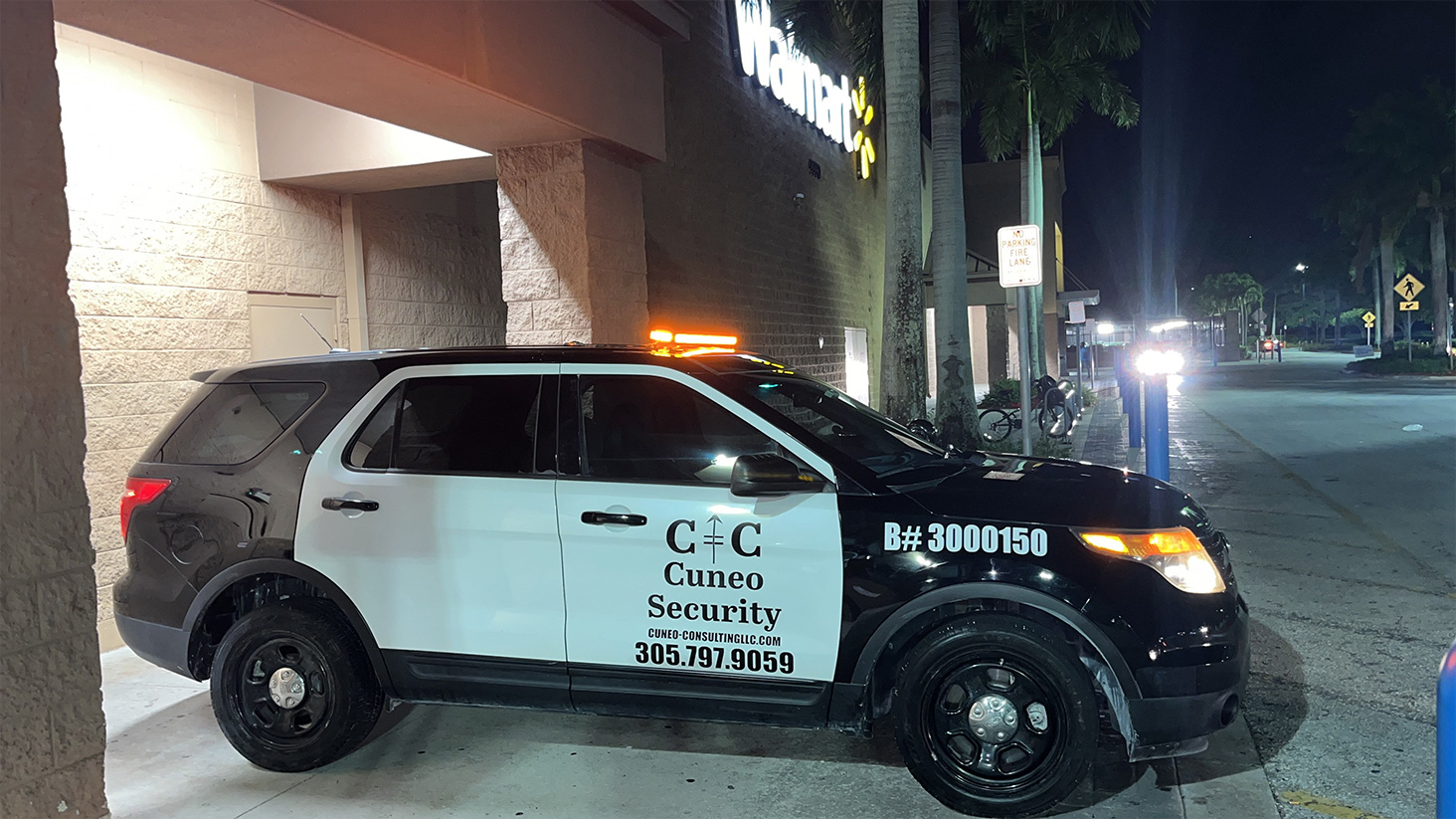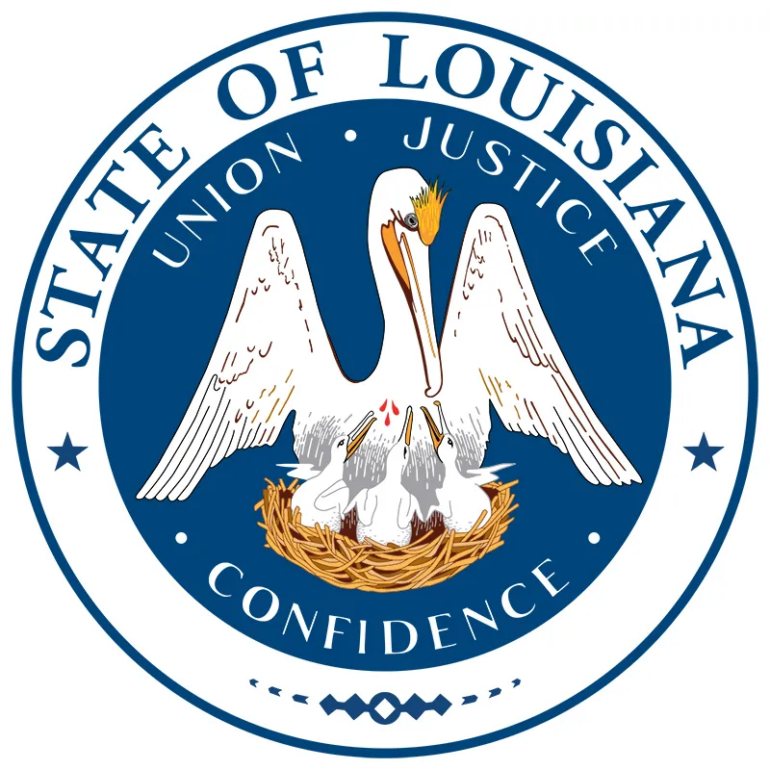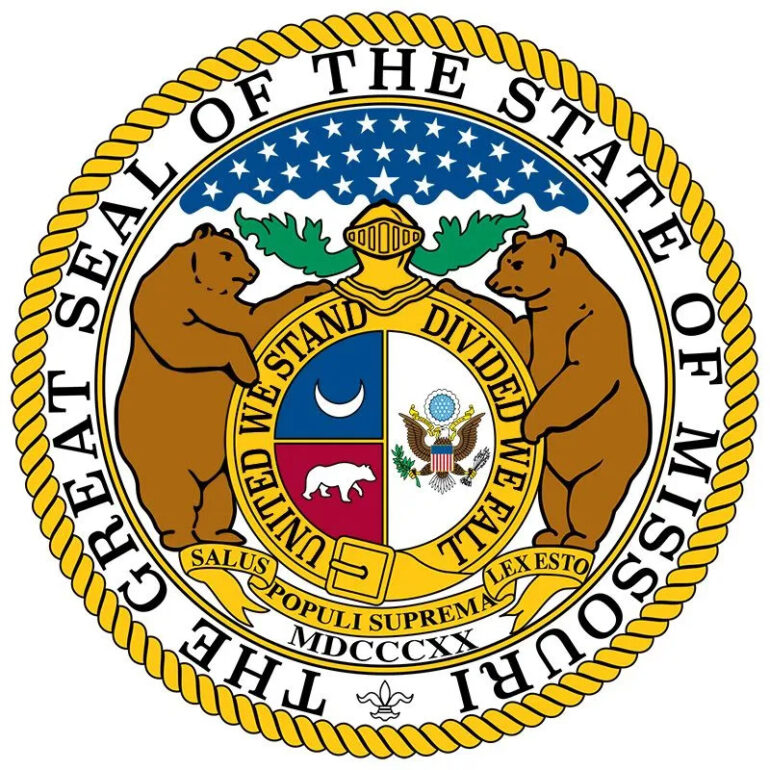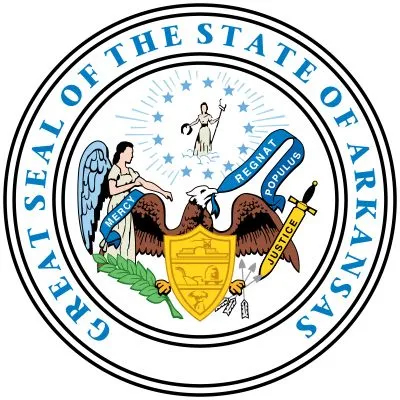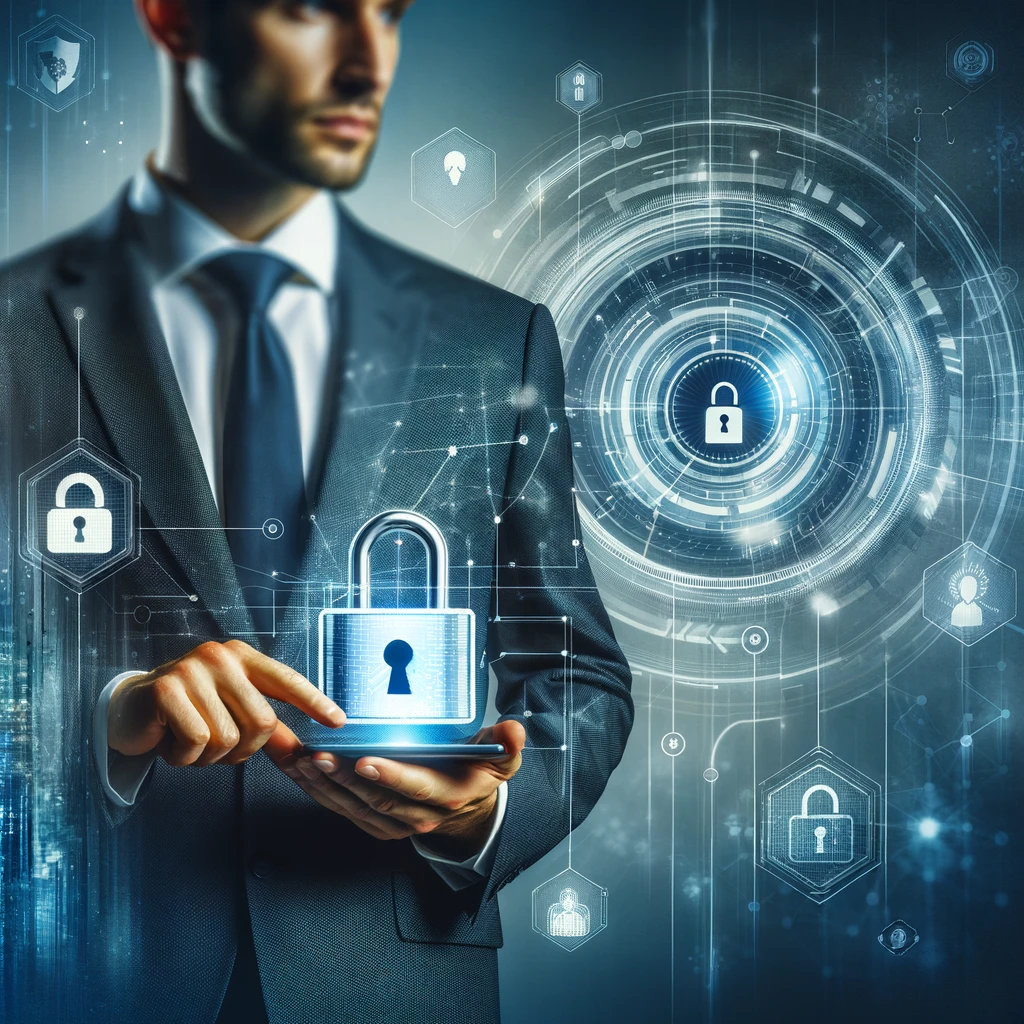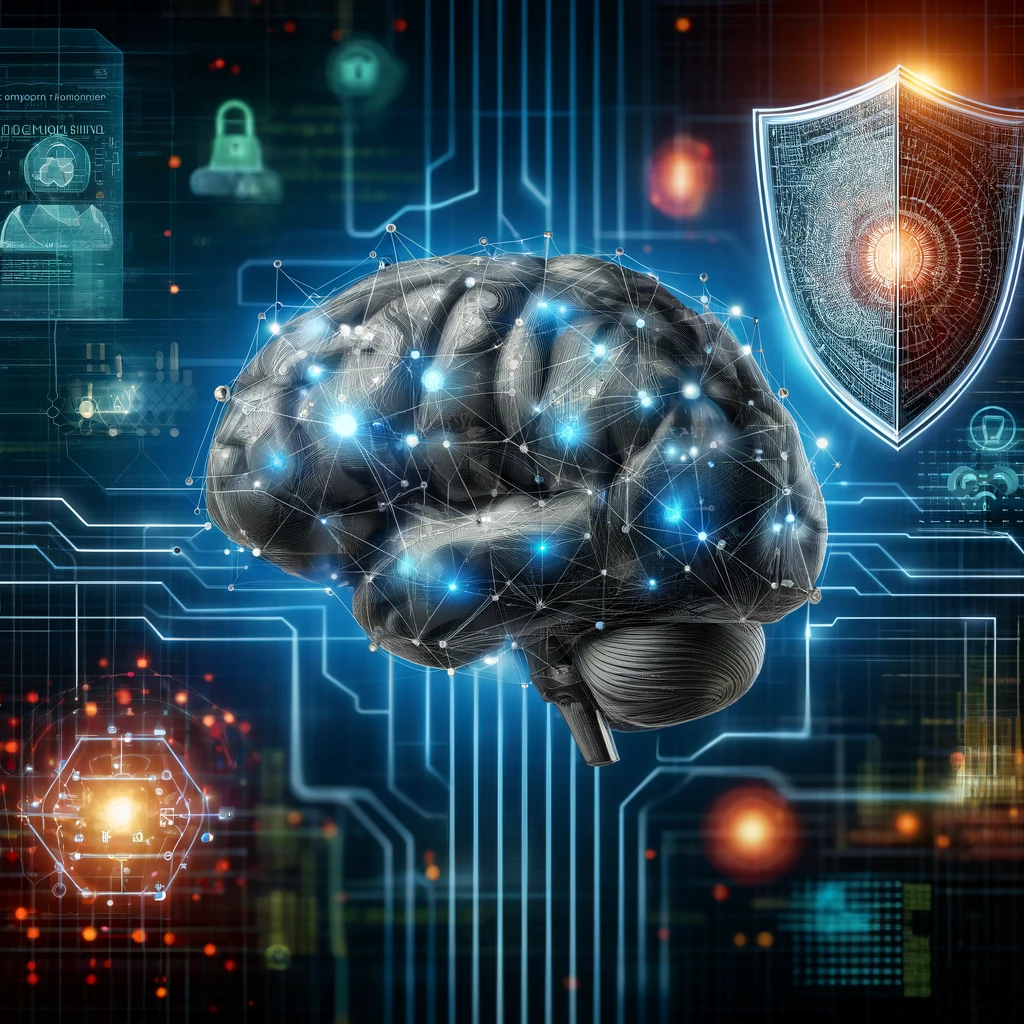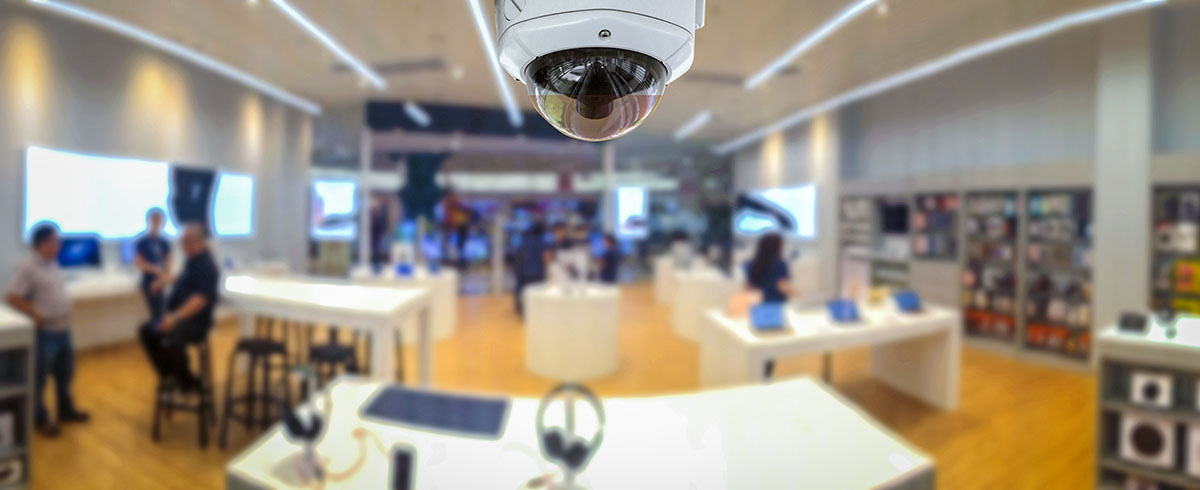Retailers in Tennessee and Oklahoma face diverse security challenges, from shoplifting and vandalism to organized retail crime and cyber threats. These issues demand tailored solutions that address the unique dynamics of urban and rural retail environments. Cuneo Consulting specializes in providing comprehensive security strategies, including advanced surveillance systems, employee training programs, and partnerships with local law enforcement. By leveraging cutting-edge technology and fostering community engagement, Cuneo Consulting ensures businesses are protected while fostering a safer retail environment. Through proactive measures and customized approaches, retailers can mitigate risks, enhance customer trust, and improve operational efficiency. Discover how Cuneo Consulting’s expertise empowers retailers to overcome modern security challenges and thrive in a competitive market.
Human Intelligence in Security: Why It’s Crucial for Business Protection
Human intelligence has always played a critical role in maintaining security, both in traditional and modern contexts. As security threats evolve, businesses today face increasingly complex challenges that require more than just automated solutions.
The Ultimate Guide to Armed and Unarmed Security & Private Investigations
In an unpredictable world, the need for effective security is more pressing than ever. Traditional security methods—armed and unarmed security services, combined with private investigative expertise—form the cornerstone of protection for individuals, businesses, and communities. These time-honored approaches leverage the intuition, judgment, and adaptability of skilled professionals, providing a human element that technology alone cannot replicate.
Cuneo Consulting exemplifies the power of traditional security by blending expertise with adaptability to meet the evolving needs of their clients. From safeguarding high-value assets to providing executive protection and conducting discreet investigations, Cuneo Consulting delivers consistent results through a commitment to professionalism, ethics, and excellence.
The integration of human expertise with modern tools ensures a comprehensive security approach that addresses both physical and digital threats, making traditional security more relevant today than ever before. Choose Cuneo Consulting for reliable, customized security solutions.
Innovative Security Solutions at GSX 2024: Cuneo Consulting and Blitzt Partner for Success
Revolutionizing Security: Cuneo Consulting and Blitzt Unite at GSX 2024
In an era of unprecedented global challenges, the security industry stands at a critical juncture. The Global Security Exchange (GSX) 2024 emerges as a beacon of innovation, drawing thousands of elite professionals to a nexus of cutting-edge solutions and strategic foresight. At the heart of this transformative gathering, Cuneo Consulting and Blitzt are poised to unveil a groundbreaking partnership at booth 2287, promising to redefine the landscape of security technology and workforce management.
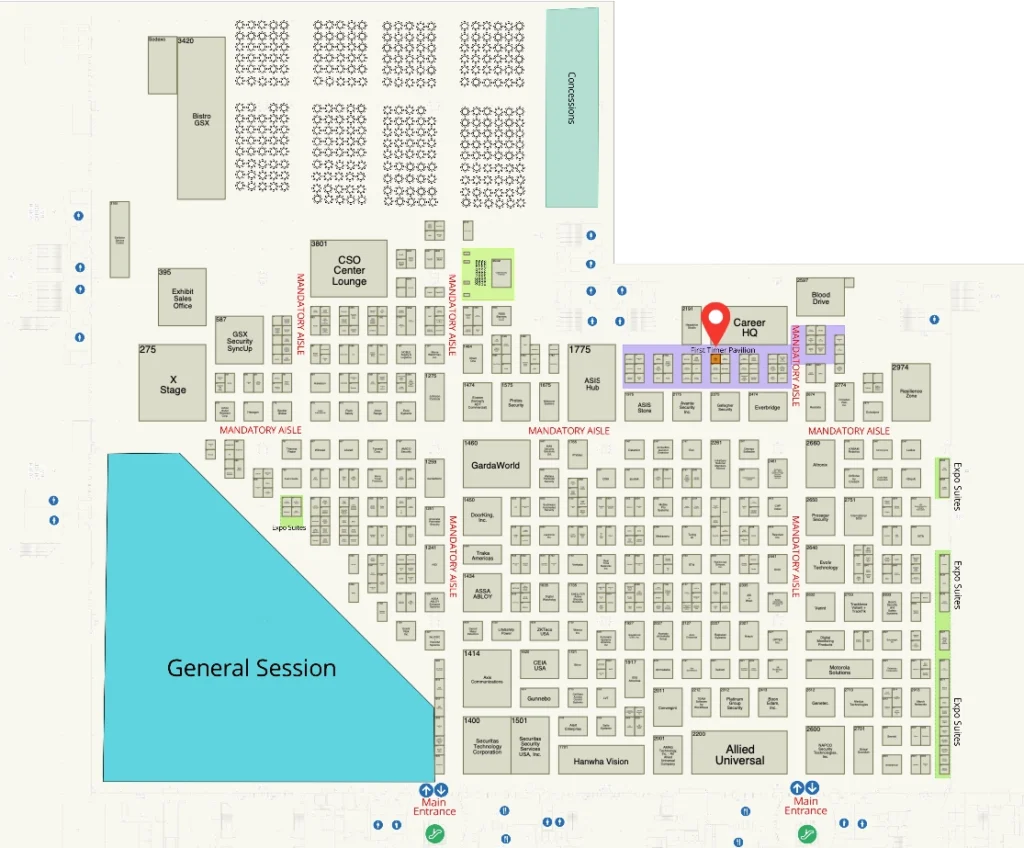
Cuneo Consulting, renowned for its incisive strategic acumen in business development and technology integration, brings a wealth of industry expertise to bear on the complex security challenges of our time. Their forward-thinking approach melds deep sector knowledge with innovative problem-solving, offering solutions that not only address current issues but anticipate future trends.
Complementing this strategic prowess, Blitzt represents the vanguard of workforce management in the security sector. This revolutionary platform harnesses advanced technology to seamlessly connect security officers and agencies with employment opportunities, dramatically enhancing operational efficiency and responsiveness in an industry where every second counts.
The synergy between these two powerhouses is personified by Kevin Ramer, a visionary leader who straddles both worlds. As the head of Business Development at Cuneo Consulting and a key partner at Blitzt, Ramer brings a unique, holistic perspective to the partnership. His dual role serves as a catalyst for innovation, enabling the fusion of high-level strategy with practical, on-the-ground solutions.
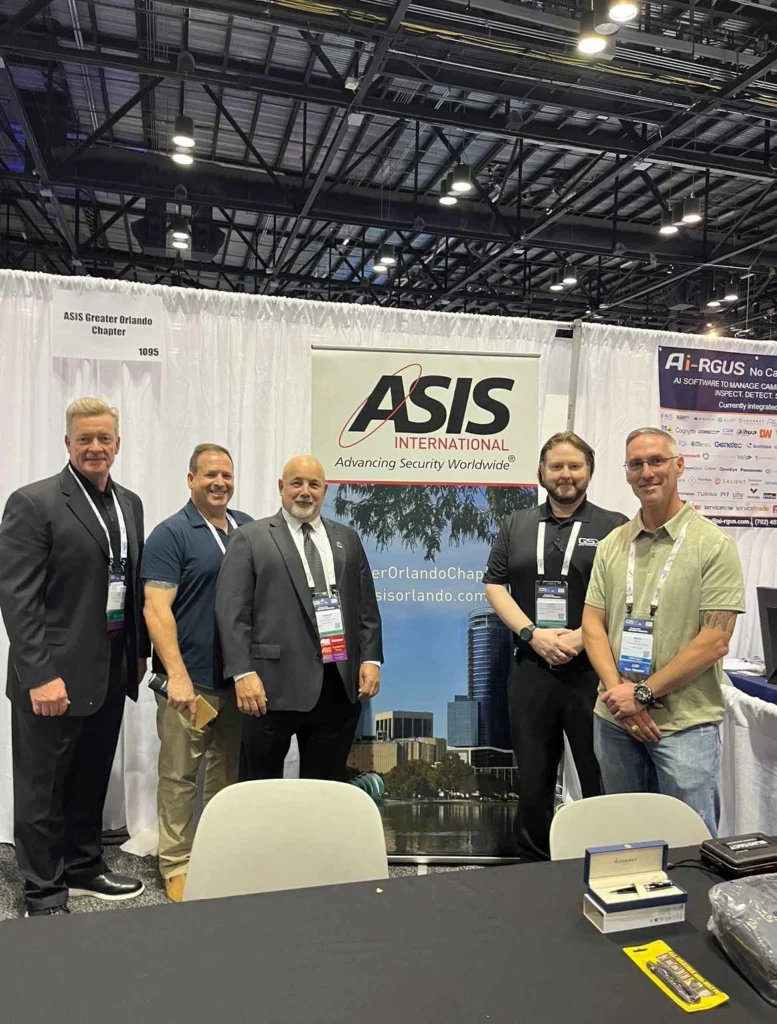
As GSX 2024 unfolds, the Cuneo Consulting-Blitzt alliance stands ready to captivate attendees with a compelling vision of the future. Their collaborative showcase promises to deliver not just theoretical concepts, but tangible, implementable solutions that will empower businesses and professionals to thrive in an increasingly complex and dynamic security landscape.
In a world where security challenges evolve at breakneck speed, this partnership represents more than a mere business collaboration—it heralds a paradigm shift in how the industry approaches its most pressing issues. As the doors of GSX 2024 open, all eyes will be on booth 2287, where the future of security is not just being imagined, but actively forged.
GSX 2024: Forging the Future of Global Security
In an era defined by unprecedented technological advancement and evolving global threats, the Global Security Exchange (GSX) 2024 emerges as a crucible of innovation and strategic foresight. Far more than a conventional industry gathering, GSX has established itself as the preeminent international nexus where the trajectory of global security is not merely discussed, but actively shaped.

A Convergence of Elite Minds
Orchestrated by ASIS International, a paragon in the realm of security management, GSX 2024 serves as a magnetic force, drawing together an unparalleled assembly of luminaries:
- Visionary Policymakers: Architects of regulatory frameworks that govern the delicate balance between security and civil liberties.
- Pioneering Technologists: Minds at the bleeding edge of innovation, pushing the boundaries of what’s possible in security solutions.
- Seasoned Practitioners: Boots-on-the-ground experts who translate theoretical concepts into real-world applications.
- Academic Thought Leaders: Researchers and theorists who provide the intellectual foundation for next-generation security paradigms.
This diverse confluence of expertise creates a unique intellectual ecosystem, fostering cross-pollination of ideas that transcend traditional industry silos.
At the Vanguard of Technological Integration
GSX 2024 positions itself at the forefront of the technological revolution reshaping the security landscape. Key focus areas include:
- Artificial Intelligence and Machine Learning: Moving beyond buzzwords to showcase tangible applications in threat detection, predictive analytics, and autonomous response systems.
- Quantum Computing in Cybersecurity: Exploring both the threats and opportunities presented by this emerging computational paradigm.
- Internet of Things (IoT) and Edge Computing: Addressing the security implications of an increasingly connected world, from smart cities to industrial control systems.
- Blockchain for Secure Transactions: Demonstrating innovative uses of distributed ledger technology in identity verification and supply chain integrity.
Through immersive demonstrations, interactive exhibits, and hands-on laboratories, GSX 2024 transforms abstract concepts into tangible solutions, bridging the chasm between theoretical potential and practical implementation.
A Multidisciplinary Approach to Complex Challenges
In recognition of the interconnected nature of modern security threats, GSX 2024 champions a holistic, cross-sector approach. The event serves as a catalyst for collaboration between:
- Corporate security executives
- Government intelligence agencies
- Law enforcement bodies
- Critical infrastructure operators
- Cybersecurity specialists
- Emergency response teams
This multifaceted gathering reflects a growing recognition that today’s security challenges—from transnational cybercrime to climate-induced disruptions—demand solutions that transcend traditional organizational and national boundaries.
Beyond the Convention Center: Global Impact
The reverberations of GSX 2024 will extend far beyond the temporal and physical confines of the event itself. Discussions initiated here have the potential to:
- Influence international security policies and standards
- Shape investment trends in security technologies
- Redefine best practices in risk management and threat mitigation
- Catalyze new public-private partnerships in security innovation
As Cuneo Consulting and Blitzt prepare to unveil their groundbreaking partnership at booth 2287, they enter an arena where every interaction holds the potential to reshape the global security landscape. In this context, GSX 2024 is not merely an event—it is a crucible for the ideas, technologies, and collaborations that will define the future of global security in an increasingly complex world.
Cuneo Consulting: Strategic Security Solutions
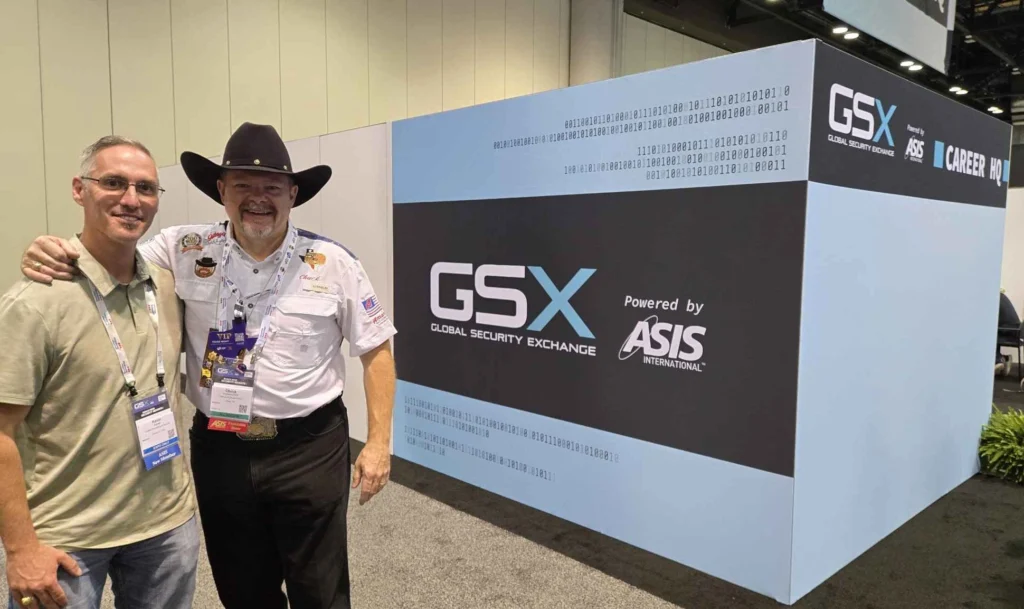
Cuneo Consulting is a trusted provider of tailored security consulting services, recognized for its ability to address complex challenges in both physical and operational security. With expertise spanning a wide range of security disciplines, Cuneo Consulting delivers practical solutions that enhance organizational resilience and ensure continuity in a rapidly changing threat landscape.
Risk Management and Security Consulting
At the core of Cuneo Consulting’s services is its commitment to providing comprehensive risk management and security consulting. The firm specializes in identifying vulnerabilities and developing customized strategies to mitigate risks. Cuneo’s services include:
- Security Assessments: Conducting thorough evaluations to identify potential risks to physical and operational assets.
- Risk Mitigation Strategies: Crafting detailed plans that help organizations address identified vulnerabilities and enhance overall security.
- Incident Response Planning: Designing effective response strategies that enable organizations to quickly and efficiently handle security incidents.
Regulatory Compliance and Audits
Cuneo Consulting ensures that its clients remain compliant with industry standards and regulatory requirements, helping organizations navigate an increasingly complex legal landscape. With a deep understanding of the regulatory frameworks that govern security practices, Cuneo Consulting offers:
- Regulatory Compliance Consulting: Assisting organizations in aligning their security measures with both industry-specific and broader regulatory guidelines.
- Internal Security Audits: Conducting comprehensive audits to assess the effectiveness of current security protocols and ensure they meet regulatory standards.
Operational Resilience
In addition to security consulting, Cuneo Consulting focuses on strengthening operational resilience. By offering solutions that enhance both physical and operational security, the firm helps organizations prepare for potential disruptions and maintain continuity in the face of adversity. This includes:
- Resilience Planning: Developing strategies to ensure that organizations can continue operating effectively in the event of security breaches or other critical incidents.
Kevin Ramer: Leadership in Security Strategy
Kevin Ramer plays a pivotal role in driving Cuneo Consulting’s strategic vision. His leadership and expertise in security solutions have been instrumental in shaping the company’s approach to tackling modern security challenges. Ramer’s contributions to the firm’s growth underscore its reputation as a leader in the security consulting space.
Showcasing Expertise at GSX 2024
At GSX 2024, Cuneo Consulting will showcase its expertise in security assessments, risk management, and regulatory compliance. Attendees visiting booth 2287 will have the opportunity to engage with Cuneo’s team and learn how their tailored security solutions can help organizations mitigate risks, strengthen resilience, and ensure compliance in today’s complex security environment.
Blitzt: Revolutionizing Workforce Management in Security
As the security industry continues to grapple with labor shortages and increasing demands for operational efficiency, Blitzt has emerged as a transformative force in workforce management. By utilizing real-time technology to connect security officers with agencies, Blitzt is addressing a critical pain point: ensuring that qualified personnel are available where and when they are needed most. At GSX 2024, Blitzt will demonstrate how its platform not only streamlines the hiring process but also sets new standards for efficiency in workforce management.
Addressing Industry-Wide Challenges
The security industry, like many others, faces significant challenges in recruiting and managing talent. According to industry reports, the global security workforce is struggling to keep up with increasing demands, particularly in high-risk sectors like critical infrastructure and public events. Blitzt is directly responding to these trends by offering a platform that enhances workforce agility and reduces administrative burdens.
“Blitzt is solving one of the most pressing issues in our industry: finding and deploying skilled security professionals in real-time,” says Kevin Ramer. “By automating key aspects of workforce management, we’re giving security agencies the tools to operate more efficiently without compromising on quality.”
Connecting Security Professionals with Opportunities
Blitzt’s platform leverages real-time technology to match security officers with available jobs, providing agencies with an easy-to-use tool to fill vacancies quickly. In contrast to traditional methods, which often involve lengthy and inefficient hiring processes, Blitzt’s digital solution allows agencies to maintain full operational capacity with minimal downtime.
- Real-Time Job Matching: Security professionals are matched with agencies based on location, qualifications, and availability, reducing the time it takes to fill critical roles.
- Automated Onboarding: The platform handles onboarding processes, allowing security personnel to begin work more quickly and helping agencies maintain operational continuity.
Enhancing Operational Efficiency with Data-Driven Insights
Blitzt goes beyond job-matching by offering agencies valuable insights into their workforce. The platform’s data-driven features enable agencies to optimize scheduling, reduce overtime costs, and ensure compliance with labor regulations. By automating these processes, Blitzt helps agencies cut down on manual administrative tasks and focus on core security operations.
“The efficiency gains are remarkable,” says EJ Cuneo. “Blitzt allows agencies to deploy their workforce with precision, ensuring that the right people are in place at the right time.”
Scalability and Flexibility for Agencies of All Sizes
Blitzt’s cloud-based infrastructure allows security organizations to scale their operations as needed, whether they are managing a small team or hundreds of security professionals. Traditional workforce management systems often struggle with scalability, leading to operational inefficiencies. Blitzt’s platform, on the other hand, offers flexibility that can grow with the organization, allowing agencies to respond to fluctuating demand without being constrained by administrative bottlenecks.
Comparison with Traditional Methods
Compared to traditional workforce management systems, which often rely on manual scheduling and communication, Blitzt’s platform offers a modern, automated solution. Traditional methods can result in delays, scheduling conflicts, and increased operational costs due to inefficiencies. Blitzt mitigates these issues by providing an integrated system that streamlines every stage of workforce management, from hiring to payroll.
Blitzt at GSX 2024: Leading the Future of Workforce Management
As Blitzt prepares to showcase its innovative platform at GSX 2024, attendees will have the opportunity to see firsthand how it is reshaping workforce management for security agencies. By reducing administrative overhead and improving operational efficiency, Blitzt is helping security organizations meet today’s complex demands with greater agility and precision.
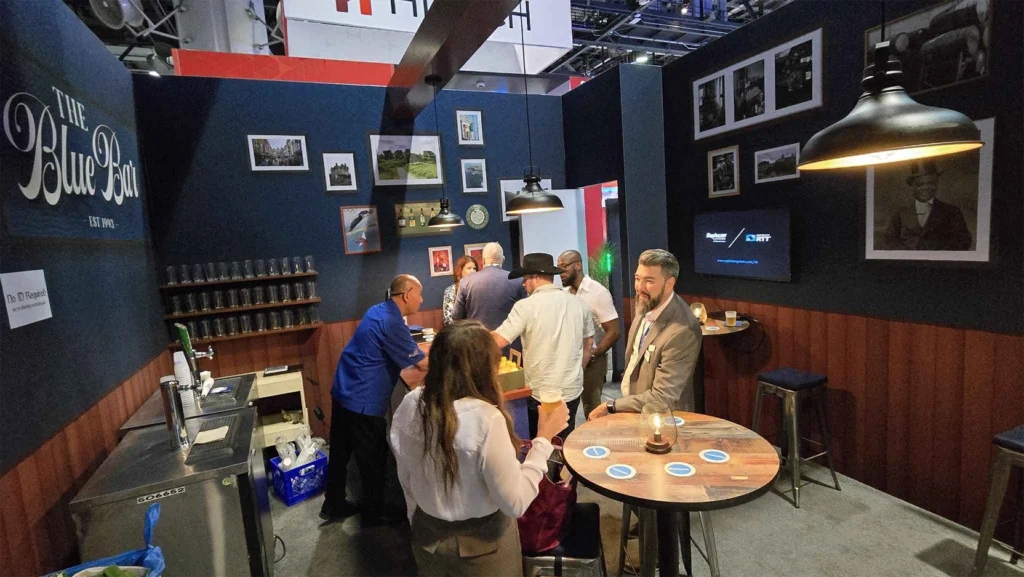
Booth 2287: A Hub of Innovation
At GSX 2024, booth 2287 will serve as a focal point for security professionals seeking to explore cutting-edge solutions in both security consulting and workforce management. The collaboration between Cuneo Consulting and Blitzt at this booth promises to deliver a comprehensive look at how technology and strategy can merge to create more effective and resilient security operations.
Cuneo Consulting: Tailored Security Solutions
Visitors to booth 2287 will have the opportunity to engage directly with Cuneo Consulting’s team of experts. Known for its tailored approach to security consulting, Cuneo will showcase how its risk management and compliance services help organizations navigate the increasingly complex security landscape.
Attendees will have access to live demonstrations of how Cuneo’s risk assessments and incident response planning can be customized to meet the specific needs of various industries, from critical infrastructure to healthcare and finance. By offering detailed insights into their consulting process, Cuneo will provide a clear picture of how businesses can bolster their security operations and ensure regulatory compliance.
Blitzt: Revolutionizing Workforce Management
Blitzt will also take center stage at booth 2287, highlighting its platform’s ability to revolutionize workforce management for security agencies. Attendees will be able to explore the platform’s features, from real-time job matching and automated scheduling to payroll processing and compliance tracking.
Interactive displays will allow attendees to see firsthand how Blitzt’s cloud-based system can scale to meet the needs of security organizations of all sizes. By demonstrating how its platform simplifies workforce management, Blitzt aims to show how security agencies can reduce costs, improve efficiency, and better meet the demands of an increasingly dynamic industry.
Live Demonstrations and Insights
Booth 2287 will not just be a static display of information; it will offer live, interactive demonstrations that highlight how both companies’ solutions can be implemented in real-world scenarios. For Cuneo Consulting, this may include walk-throughs of how their incident response planning can help mitigate risks in high-stakes environments, while Blitzt will showcase its platform’s ability to optimize workforce management in real time.
The joint presence of Cuneo Consulting and Blitzt offers a unique opportunity for attendees to understand how integrating strategy with technology can lead to more effective security operations. Visitors will leave with actionable insights on how to implement these solutions in their own organizations, whether it’s enhancing operational resilience, ensuring regulatory compliance, or managing a security workforce with greater agility.
Networking and Expert Insights
Booth 2287 will also serve as a key networking hub at GSX 2024, where security professionals, industry leaders, and decision-makers can engage with thought leaders from both Cuneo Consulting and Blitzt. These interactions will provide attendees with valuable opportunities to gain insights into the future of security, workforce management, and regulatory compliance.
Kevin Ramer, who plays a pivotal role in both Cuneo Consulting and Blitzt, will be on hand to offer his perspectives on how security agencies can evolve in response to new challenges. His dual role provides a unique vantage point on the intersection of security consulting and workforce management, making him a key figure for attendees to connect with during the event.
Conclusion
Booth 2287 at GSX 2024 is more than just an exhibit—it’s a dynamic hub where innovation in security consulting and workforce management comes to life. Cuneo Consulting and Blitzt will offer attendees not only the opportunity to explore new technologies and strategies but also the chance to engage with the people behind these cutting-edge solutions. Whether you’re looking to strengthen your organization’s security posture or streamline workforce management, booth 2287 will provide the tools, insights, and connections necessary to thrive in today’s complex security environment.
Kevin Ramer: Bridging Two Worlds

At the intersection of security consulting and workforce management, Kevin Ramer has emerged as a key figure driving innovation and operational excellence. As both the head of Cuneo Consulting’s Business Development division and a partner at Blitzt, Ramer is uniquely positioned to influence how organizations approach two of the most critical aspects of security today: strategic planning and workforce efficiency.
A Visionary in Security Consulting
In his role at Cuneo Consulting, Kevin Ramer has been instrumental in shaping the company’s approach to addressing the modern challenges of risk management, regulatory compliance, and operational resilience. His leadership has ensured that Cuneo Consulting remains a trusted partner for organizations navigating increasingly complex security threats. By blending traditional security consulting methods with cutting-edge technology, Ramer has helped the firm offer innovative solutions tailored to the specific needs of their clients.
“Security is no longer about reacting to threats—it’s about anticipating and mitigating them before they become problems,” Ramer says. “At Cuneo, we focus on providing clients with the tools and strategies they need to stay ahead of potential risks, while also ensuring they remain compliant with ever-changing regulatory requirements.”
Under Ramer’s direction, Cuneo Consulting has solidified its reputation as a leader in risk management and operational resilience, offering bespoke solutions that empower organizations to enhance their security posture.
Innovating Workforce Management at Blitzt
At Blitzt, Ramer’s influence is equally impactful. His deep understanding of security operations has been key in guiding the development of Blitzt’s platform, which is designed to revolutionize how security agencies manage their workforce. Ramer’s vision for Blitzt goes beyond improving operational efficiency; it’s about creating a system that empowers security agencies to deploy personnel more strategically and manage resources with greater flexibility.
Blitzt’s ability to connect security officers with agencies in real time, streamline administrative processes, and optimize scheduling is a reflection of Ramer’s focus on enhancing workforce agility in an industry where rapid response is crucial.
“The goal at Blitzt is to remove the bottlenecks that slow down security operations,” Ramer explains. “By leveraging technology, we’re enabling security agencies to make faster, more informed decisions about workforce deployment, which ultimately leads to better outcomes for everyone.”
A Dual Perspective: Strategic Insight and Operational Execution
What sets Ramer apart is his dual expertise in both strategic security consulting and operational workforce management. His role at both Cuneo Consulting and Blitzt gives him a unique perspective on how these two aspects of security can be integrated to create more cohesive and effective solutions.
At GSX 2024, Ramer will play a central role in presenting the collaborative efforts of Cuneo Consulting and Blitzt, illustrating how their combined approach can help security organizations improve both their strategic outlook and day-to-day operations.
Leading the Charge at GSX 2024
As attendees visit booth 2287 at GSX 2024, they will have the opportunity to engage with Ramer and gain insight into his vision for the future of security. His expertise in merging technology with security strategy makes him a valuable resource for those looking to stay ahead of the curve in an increasingly complex industry.
Ramer’s dual leadership roles exemplify how security agencies can evolve by integrating high-level strategic planning with operational efficiency. By harnessing the combined strengths of Cuneo Consulting’s tailored solutions and Blitzt’s workforce management platform, Ramer is helping to shape the future of security in a way that benefits both organizations and the professionals who safeguard them.
Conclusion: Forging the Future of Security at GSX 2024
As GSX 2024 approaches, Cuneo Consulting and Blitzt stand at the forefront of innovation, poised to redefine the way security organizations operate in an increasingly complex world. Their collaboration, showcased at booth 2287, offers a unique blend of strategic foresight and operational efficiency—two critical components for success in today’s security landscape.
Cuneo Consulting’s expertise in risk management, regulatory compliance, and operational resilience provides organizations with the tools to anticipate and mitigate the challenges of tomorrow. At the same time, Blitzt’s workforce management platform revolutionizes how security agencies deploy personnel, optimize resources, and respond to dynamic threats. Together, these two companies are setting new standards for how security solutions are designed and executed.
Kevin Ramer’s dual role in both organizations exemplifies the seamless integration of strategy and technology. His leadership ensures that Cuneo Consulting and Blitzt are not only providing innovative solutions but also driving meaningful change in the industry. The insights and solutions presented at GSX 2024 will undoubtedly have far-reaching implications for how security agencies address both current and future challenges.
For attendees, booth 2287 represents an opportunity to engage with cutting-edge technology, expert insights, and actionable strategies that can transform their security operations. Whether it’s learning how to enhance organizational resilience, streamline workforce management, or ensure compliance with ever-evolving regulations, the solutions on display at GSX 2024 offer a comprehensive roadmap for navigating the security challenges of the future.
As the global security environment continues to evolve, the collaboration between Cuneo Consulting and Blitzt serves as a testament to the power of innovation, strategic thinking, and operational excellence. GSX 2024 is more than an event—it’s a platform where the future of security is being forged.
ASIS GSX 2024 EXPO
Be Sure to Stop By and Visit EJ and Kevin at Booth 2287
Bravery Beyond Measure: Remembering the First Responders of September 11th
Introduction: Setting the Stage
In the annals of American history, few days stand out with such stark clarity and profound impact as September 11, 2001. On that crisp Tuesday morning, the world as we knew it changed forever. The events that unfolded would not only alter the skyline of New York City but also redefine the very essence of heroism and sacrifice in the modern era.
Overview of the September 11th Attacks

By rds323 – https://www.flickr.com/photos/rudis323/42995258670/, Public Domain, Link
At 8:46 AM Eastern Time, American Airlines Flight 11 crashed into the North Tower of the World Trade Center, marking the beginning of what would become the deadliest terrorist attack on American soil. As the nation watched in horror, a second plane, United Airlines Flight 175, struck the South Tower at 9:03 AM. The unthinkable had become a reality: America was under attack.
The tragedy continued to unfold with devastating speed. At 9:37 AM, American Airlines Flight 77 slammed into the western facade of the Pentagon in Washington, D.C. Then, at 9:59 AM, the South Tower of the World Trade Center collapsed, sending a massive cloud of dust and debris billowing through the streets of Lower Manhattan. The North Tower followed suit at 10:28 AM, forever changing the iconic New York City skyline.

By CPL Jason Ingersoll, USMC – http://www.defenseimagery.mil/imageRetrieve.action?guid=aaf2de734d7b3b94d1b8ad72baf9fdc597deccbc&t=2, Public Domain, Link
Amidst this chaos, a fourth hijacked plane, United Airlines Flight 93, crashed into a field near Shanksville, Pennsylvania, at 10:03 AM, thwarted from its intended target by the brave actions of its passengers.
In the span of less than two hours, nearly 3,000 lives were lost, and countless more were forever altered. The September 11th attacks reshaped not only American foreign and domestic policy but also the global geopolitical landscape. The reverberations of that day continue to be felt more than two decades later, influencing everything from international relations to airport security protocols.

By I, Aude, CC BY-SA 3.0, Link
The Role of First Responders
As the towers burned and panic gripped the city, one group of individuals ran towards the danger while others fled. The first responders—firefighters, police officers, emergency medical technicians, and paramedics—answered the call of duty with unwavering courage and selflessness.
These brave men and women ascended smoke-filled stairwells, navigated through falling debris, and risked their lives to save others. They worked tirelessly, often with little regard for their own safety, to evacuate survivors, provide medical assistance, and bring some semblance of order to the chaos that engulfed Lower Manhattan.
The sacrifice of these first responders was immense. In total, 343 firefighters and paramedics, 23 New York City police officers, and 37 Port Authority police officers lost their lives that day. Many more would suffer long-term health consequences from their exposure to toxic dust and debris at Ground Zero.
The bravery displayed by these individuals in the face of unimaginable horror serves as a testament to the very best of humanity. Their actions remind us that even in our darkest hours, there are those among us willing to lay down their lives for others.
Purpose of the Article
This article seeks to honor and remember the first responders of September 11th, 2001. Their courage, sacrifice, and unwavering commitment to duty deserve to be etched into our collective memory. By exploring their stories, we aim to ensure that their legacy lives on and continues to inspire future generations.
In the pages that follow, we will delve into the experiences of these brave individuals, from the immediate response on that fateful day to the long-term impacts on their health and well-being. We will examine the challenges they faced, the lives they saved, and the ultimate price many paid in service to their fellow citizens.
Moreover, this article will explore how the actions of these first responders united a nation in grief and admiration. We will look at how their sacrifice has been memorialized, both in physical monuments and in the hearts of the American people. We will also consider the lessons their bravery holds for us today and how we can honor their memory by supporting the first responders in our own communities.
As we embark on this journey of remembrance, let us approach these stories with reverence and gratitude. The first responders of September 11th demonstrated bravery beyond measure, and it is our duty to ensure that their heroism is never forgotten. Through their stories, we not only pay tribute to their sacrifice but also reaffirm the values of courage, selflessness, and unity that they so valiantly upheld in America’s darkest hour.
“On September 11, 2001, ordinary men and women performed extraordinary acts of bravery, not just in a moment of crisis, but in the face of unimaginable adversity. Their courage in the face of this unprecedented attack would leave a lasting mark on our collective consciousness and set a new standard for heroism—one that still inspires us today.”
~EJ Cuneo, CEO Cuneo Consulting
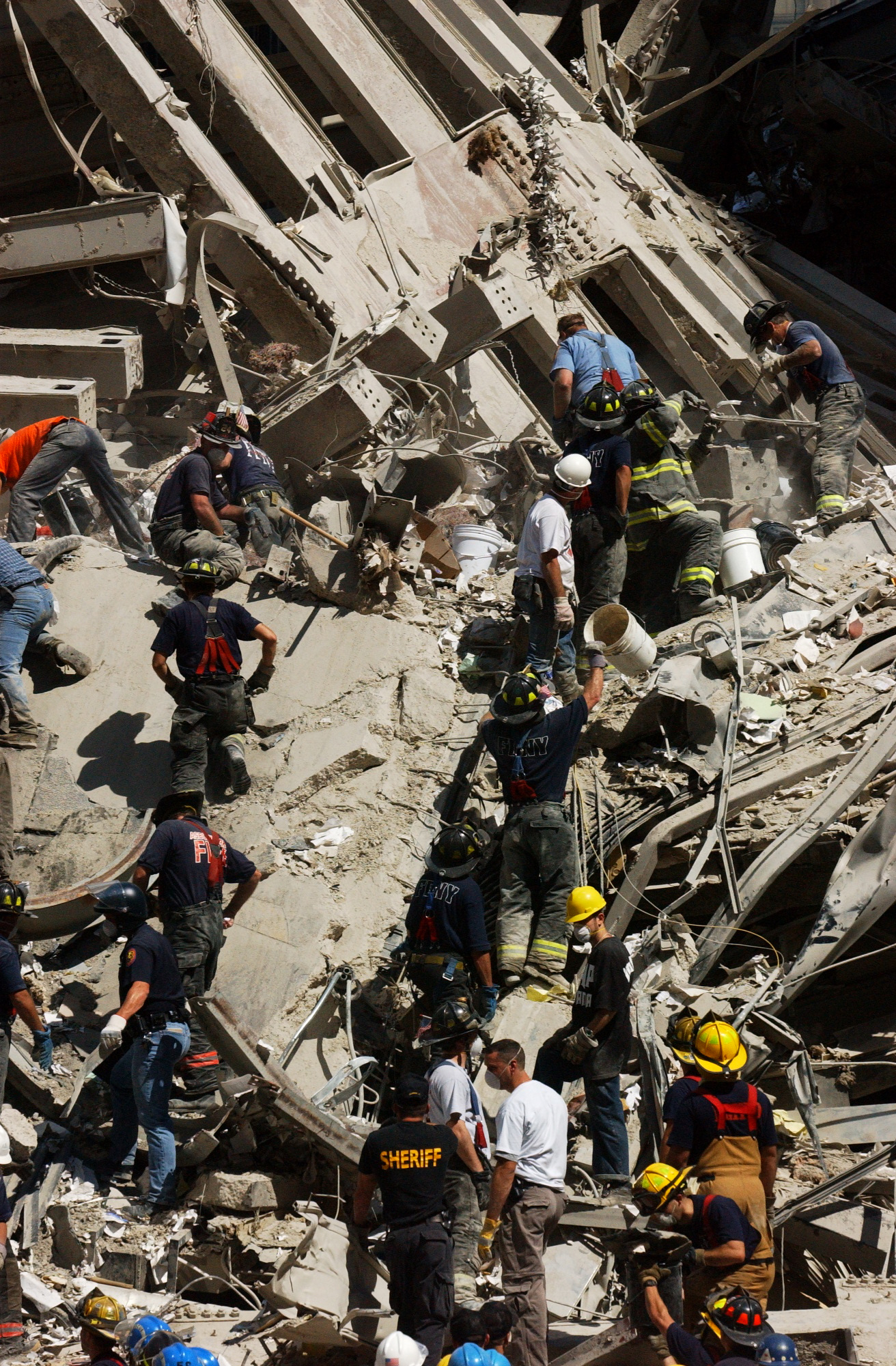
By U.S. Navy photo by Photographer’s Mate 2nd Class Jim Watson. – http://www.navy.mil/management/photodb/photos/010914-N-1350W-001.jpg, Public Domain, Link
Chapter 1: Who Were the First Responders?
In the aftermath of the September 11th attacks, the term “first responder” became etched into the American consciousness. These individuals, who ran towards danger while others fled, embodied the very essence of courage and selflessness. But who exactly were these brave men and women? This chapter aims to define first responders, explore their specialized skills and training, highlight the notable teams present at Ground Zero, and recognize the ordinary citizens who stepped up in extraordinary ways.
Defining First Responders
First responders are individuals who are the first to arrive at the scene of an emergency, accident, natural disaster, or similar critical situation. They are trained to take immediate action to save lives, minimize damage, and manage the initial stages of the incident. On September 11th, 2001, this broad definition encompassed several key groups:
Firefighters
Members of the Fire Department of New York (FDNY) were among the first to arrive at the World Trade Center. Firefighters are trained to combat fires, perform rescue operations, and provide emergency medical services. Their specialized skills include:
- Fire suppression techniques
- Search and rescue in hazardous environments
- Emergency medical care
- Hazardous materials handling
- Building evacuation procedures
On 9/11, firefighters faced unprecedented challenges as they navigated burning skyscrapers, attempting to reach those trapped on upper floors. Their mission on that day transcended ordinary firefighting duties, as they became lifelines for those stranded in the towers.

By U.S. Navy Photo by Journalist 1st Class Preston Keres – This image was released by the United States Navy with the ID 010914-N-3995K-015 (next).This tag does not indicate the copyright status of the attached work. A normal copyright tag is still required. See Commons:Licensing., Public Domain, Link
Police Officers
The New York Police Department (NYPD) played a crucial role in managing the chaos at Ground Zero. Police officers are trained to:
- Maintain public order and safety
- Coordinate emergency responses
- Perform crowd control
- Conduct search and rescue operations
- Provide first aid and basic life support
NYPD officers were instrumental in directing evacuations, securing the area around the World Trade Center, and assisting with rescue efforts. Their presence ensured not only safety and order but also that evacuation operations proceeded smoothly under extremely dangerous conditions.

By Andrea Booher/ FEMA News Photo – This image is from the FEMA Photo Library (obsolete as of 2019).An archived copy may be found at the Wayback Machine (note: link may be permanently dead, as not all photos were backed up in this way).If the FEMA link is permanently dead, the photo can be found at NARA Access to Archival Databases (only works if photo was taken between 1989 and October 2004), or at City-data.com. (Cropped version of the original FEMA photo), Public Domain, Link
Emergency Medical Technicians (EMTs) and Paramedics
These medical professionals provide critical pre-hospital care. Their training includes:
- Advanced life support techniques
- Trauma care
- Patient assessment and triage
- Emergency pharmacology
- Handling mass casualty incidents
On 9/11, EMTs and paramedics worked tirelessly to treat the injured and transport them to hospitals, often under harrowing and dangerous conditions. Their swift response saved countless lives and helped stabilize survivors amidst the widespread destruction.
Specialized Training for Emergency Situations
First responders undergo rigorous training to prepare for a wide range of emergencies. This training includes:
- Incident Command System (ICS): A standardized approach to command, control, and coordination of emergency response.
- Disaster Preparedness: Simulations and drills for large-scale emergencies and natural disasters.
- Physical Fitness: Ensuring the stamina and strength required for demanding rescue operations.
- Psychological Preparedness: Training to cope with the mental and emotional stress of traumatic situations.
- Continuous Education: Regular updates on the latest emergency response techniques and technologies.
While this training was invaluable, the events of 9/11 tested the limits of even the most seasoned first responders, presenting challenges that no drill could have fully anticipated.
The Heroes of Ground Zero
The response to the 9/11 attacks saw an unprecedented mobilization of emergency services. Several key teams played critical roles in the immediate aftermath:
Fire Department of New York (FDNY)
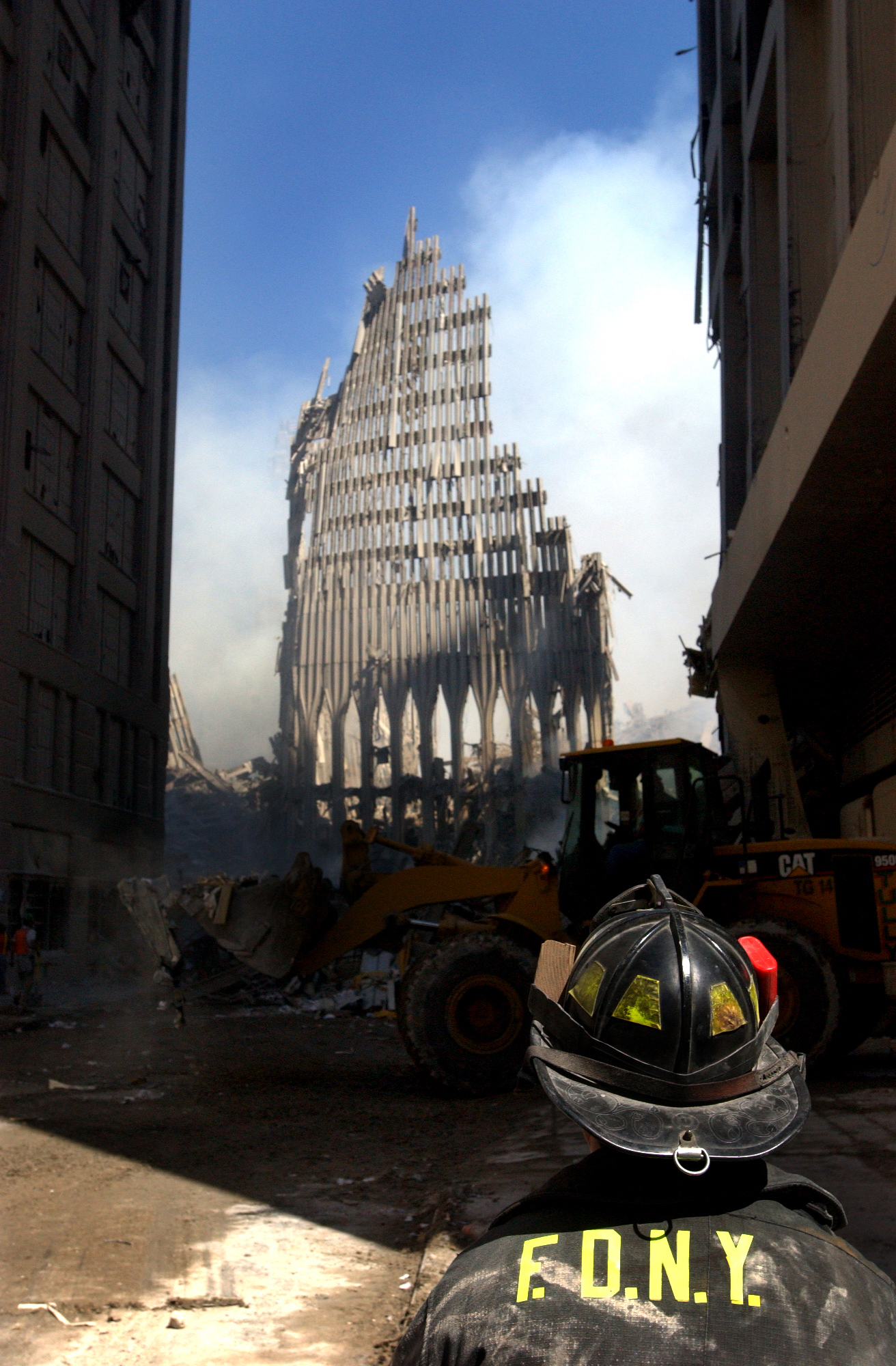
By Jim Watson – http://www.news.navy.mil/view_single.asp?id=1465, Public Domain, Link
The FDNY’s response was immediate and overwhelming in scale. Within minutes of the first plane strike, firefighters were on the scene, initiating rescue operations. Notable actions included:
- Ascending the towers to assist in evacuations
- Setting up command posts in the lobbies of both towers
- Coordinating with other agencies to manage the unfolding crisis
Despite their heroic efforts, the FDNY paid a tremendous price for their bravery, losing 343 members that day.
New York Police Department (NYPD)

By New York District Attorney’s office – Rescue worker reaching into a New York Police car covered with debris., Public Domain, Link
NYPD officers played a vital role in managing the chaos on the ground. Their responsibilities included:
- Directing civilians away from danger zones
- Assisting with evacuations
- Providing security around the impact site
- Supporting rescue and recovery efforts
The NYPD also faced significant loss, with 23 officers giving their lives in the line of duty on 9/11.
Port Authority Police Department (PAPD)
By Youngking11 – Own work, CC BY-SA 3.0, Link
As the agency responsible for policing the World Trade Center complex, PAPD officers were among the first on the scene. Their actions included:
- Initiating evacuations immediately after the first impact
- Assisting people in the corridors and stairwells of the towers
- Coordinating with other agencies in rescue efforts
The PAPD experienced the greatest single-day loss of police officers in U.S. history, with 37 officers perishing in the collapse of the towers.
Rapid Mobilization of Emergency Teams
The scale of the 9/11 attacks necessitated a response far beyond the capacity of any single agency. Within hours, a coordinated effort was underway, involving:
- Multiple firehouses across New York City
- NYPD precincts from all boroughs
- Federal agencies including the FBI and ATF
- National Guard units
- Specialized urban search and rescue teams from across the country
This rapid mobilization demonstrated not only the resilience and adaptability of America’s emergency response systems but also the deep sense of duty that bound these professionals together in the face of crisis.
The Volunteers
While professional first responders led the charge, countless ordinary citizens also stepped up, demonstrating extraordinary courage and compassion. These volunteers came from all walks of life and included:
Off-Duty First Responders
Many off-duty firefighters, police officers, and medical professionals rushed to Ground Zero upon hearing the news, without waiting to be called in. Their instinctive drive to help set a powerful example of selflessness.
Construction Workers
Skilled laborers, including ironworkers, crane operators, and heavy machinery operators, volunteered their expertise to assist in the rescue and later recovery efforts. Their skills were essential for navigating the rubble and aiding in search operations.
Medical Professionals
Doctors, nurses, and other healthcare workers from nearby hospitals and clinics volunteered their services, setting up triage centers and treating the injured. Their swift response helped prevent further loss of life.
Ordinary Citizens
Countless New Yorkers and visitors to the city became impromptu rescuers, guiding people to safety, providing first aid, and offering comfort to those in shock. Their actions, though often unheralded, were a testament to the power of human compassion in times of need.
Profiles of Civilian Heroes
- Frank De Martini and Pablo Ortiz: Port Authority employees who helped save at least 50 lives by freeing people trapped on the 88th floor of the North Tower. Both men lost their lives when the tower collapsed.
- Welles Crowther: Known as “the man in the red bandana,” this 24-year-old equities trader helped dozens of people evacuate the South Tower before losing his life in the collapse.
- Stephen Siller: An off-duty firefighter who ran through the Brooklyn Battery Tunnel with 60 pounds of gear to reach the World Trade Center. He died while saving others.
- Moira Smith: An NYPD officer who repeatedly entered the towers to lead groups of survivors to safety. She was last seen helping an asthmatic woman out of the South Tower before it collapsed.
These volunteers, whether trained professionals or ordinary citizens, exemplified the best of human nature in the face of unimaginable tragedy. Their actions remind us that in times of crisis, heroes can emerge from all walks of life.
The first responders of 9/11 – both professional and volunteer – demonstrated levels of courage and selflessness that continue to inspire us today. Their actions in the face of unprecedented challenges set a new standard for heroism and remind us of the extraordinary capacity for bravery that resides within ordinary individuals. As we remember their sacrifices, we honor not just their actions on that fateful day, but the enduring impact of their courage on our national character. But knowing who these first responders were only scratches the surface. To fully appreciate the depth of their heroism, we must witness how they responded when duty called—when the planes hit the towers and New York City descended into chaos.
Chapter 2: The Immediate Response
The morning of September 11, 2001, began like any other in New York City. But within moments, the world changed forever. This chapter delves into the chaos that engulfed Manhattan, the heroic acts of first responders, and the harrowing challenges they faced in the aftermath of the South Tower’s collapse.
Chaos in Manhattan
The Initial Aftermath
At 8:46 AM, American Airlines Flight 11 crashed into the North Tower of the World Trade Center. The impact was catastrophic, instantly transforming the bustling financial district into a war zone. Confusion reigned as office workers, pedestrians, and first responders struggled to comprehend the unfolding tragedy.
Eyewitnesses describe a scene of unparalleled chaos:
- Thick, black smoke billowed from the upper floors of the North Tower.
- Papers and debris rained down on the streets below.
- Panicked civilians fled, while others stood in shock, their eyes fixed on the burning building.
The initial response was swift but disorganized. Local law enforcement and firefighters rushed to the scene, even as they grappled with the enormity of the situation.
Response Timeline
The following timeline outlines the critical events and responses during the first hours of the attack:
- 8:46 AM: American Airlines Flight 11 strikes the North Tower.
- FDNY dispatches units to the World Trade Center.
- NYPD begins evacuating the area around the towers.
- 9:03 AM: United Airlines Flight 175 hits the South Tower.
- A full-scale emergency response is initiated.
- The Port Authority Police Department orders a complete evacuation of the WTC complex.
- 9:37 AM: American Airlines Flight 77 crashes into the Pentagon.
- New York City officials consider the possibility of a coordinated attack.
- 9:59 AM: The South Tower collapses.
- Rescue efforts intensify in the North Tower.
- Communication breakdowns plague first responders as radio systems become overwhelmed.
- 10:28 AM: The North Tower collapses.
- A massive dust cloud engulfs Lower Manhattan.
- Rescue efforts shift to searching for survivors in the rubble.
In just 102 minutes, the landscape of New York City and the lives of countless individuals were forever altered.
Acts of Heroism
Amidst the chaos and destruction, first responders and civilians alike demonstrated extraordinary courage and selflessness. Their actions in the face of unimaginable danger saved countless lives and continue to inspire us today.

By Don Halasy – http://lcweb2.loc.gov/service/pnp/ppmsca/01800/01813v.jpg, Public Domain, Link
Heroic Rescues
- The Man in the Red Bandana: Welles Crowther, an equities trader and volunteer firefighter, helped dozens of people evacuate the South Tower. Survivors recounted how a young man with a red bandana over his face guided them to safety, making multiple trips up and down the stairs. Crowther’s body was found months later alongside FDNY firefighters in a command center in the South Tower lobby.
- Ladder 6 and the “Miracle of Stairwell B”: FDNY’s Ladder 6 company, led by Captain Jay Jonas, was descending the North Tower with a civilian, Josephine Harris, when the building collapsed around them. Miraculously, they survived in a small pocket of Stairwell B, becoming some of the few survivors pulled from the collapsed towers.
- Officer Moira Smith: NYPD Officer Moira Smith was photographed helping an injured man out of the South Tower. She returned to the building multiple times to assist in evacuations before it collapsed. Smith was the only female NYPD officer to die on 9/11.
- The 9th Floor Break: Port Authority employees Pablo Ortiz and Frank De Martini led efforts to free dozens of people trapped behind jammed doors on the 88th and 89th floors of the North Tower. Their actions saved at least 77 lives before both men perished in the collapse.
Unwavering Dedication
Even as the situation grew increasingly dire, many first responders continued their rescue efforts:
- FDNY Chief Peter Ganci refused to leave his command post, continuing to coordinate rescue efforts until the North Tower collapsed.
- Paramedic Carlos Lillo was last seen running towards the South Tower with his medical bag, determined to help the injured.
- NYPD Officer John Perry, who had just filed his retirement papers, rushed to the WTC to assist with evacuations upon hearing of the attack.
These individuals, knowing the extreme danger they faced, chose to put the lives of others before their own, exemplifying the highest ideals of their professions.
The South Tower Collapse and Ground Zero Rescue Efforts
The collapse of the South Tower at 9:59 AM marked a turning point in the day’s events, transforming the rescue mission into a fight for survival for both victims and first responders.
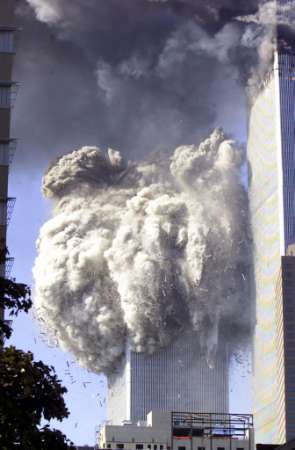
By Michael Best – https://archive.org/details/NIST_9-11_Release_37/International_Center_for_911_Studies_NIST_FOIA/Release_37/Release%2037/42A0522%20-%20G38D1/ImagesfromWebsites/collapse%20of%20tower%20%232%20from%20wtc_919.nac_919.net_63_919.144_919.52_919.29_919.jpg, Public Domain, Link
Navigating the Collapse
When the South Tower fell, a massive cloud of dust and debris engulfed Lower Manhattan. First responders faced numerous challenges:
- Near-zero visibility in the dust cloud.
- Breathing difficulties due to the toxic air.
- Disorientation and communication breakdowns.
- Falling debris and unstable structures.
Despite these obstacles, rescue efforts continued. Firefighters and police officers formed human chains to guide civilians to safety, while others searched the rubble for signs of life.
Continued Evacuation Efforts
Even after the South Tower’s collapse, first responders in the North Tower continued their evacuation efforts:
- FDNY Battalion Chief Joseph Pfeifer, whose brother Kevin was among those lost, directed operations from the North Tower lobby until moments before its collapse.
- Firefighters ascended the tower’s stairwells, assisting injured and exhausted civilians in their descent.
- NYPD helicopter crews attempted daring rescue operations on the North Tower roof, despite the extreme danger.
The collapse of the North Tower at 10:28 AM brought a new wave of destruction and despair. Yet, amid the rubble and chaos, the spirit of resilience prevailed.
The Aftermath at Ground Zero
In the hours and days following the collapses, rescue efforts at Ground Zero were relentless:
- Search and rescue teams worked around the clock, sifting through debris in hopes of finding survivors.
- Medical personnel set up triage centers to treat the injured.
- Construction workers and engineers assessed structural dangers and worked to clear paths for rescuers.
The fires that burned for 99 days after the attack, toxic air quality, and the sheer scale of destruction hampered rescue efforts. Despite these challenges, the work continued, driven by the hope of finding survivors and the determination to honor those lost.

By U.S. Navy Photo by Photographer’s Mate 2nd Class Jim Watson. – This image was released by the United States Navy with the ID 010914-N-1350W-002 (next).This tag does not indicate the copyright status of the attached work. A normal copyright tag is still required. See Commons:Licensing., Public Domain, Link
One of the most poignant moments came on September 14th, when President George W. Bush visited Ground Zero. Standing atop a pile of rubble with retired FDNY firefighter Bob Beckwith, Bush addressed the rescue workers with a bullhorn. When someone shouted that they couldn’t hear him, Bush famously replied, “I can hear you. The rest of the world hears you. And the people who knocked these buildings down will hear all of us soon.”
This moment encapsulated the nation’s grief, resolve, and unity in the face of unimaginable tragedy.

By Andrea Booher – This image is from the FEMA Photo Library (obsolete as of 2019).An archived copy may be found at the Wayback Machine (note: link may be permanently dead, as not all photos were backed up in this way).If the FEMA link is permanently dead, the photo can be found at NARA Access to Archival Databases (only works if photo was taken between 1989 and October 2004), or at City-data.com., Public Domain, Link
The immediate response to the September 11th attacks was characterized by unparalleled heroism, selflessness, and resilience. First responders and civilians alike rose to meet a challenge beyond anything they had trained for or could have imagined. Their actions in those crucial hours saved countless lives and set an example of courage that continues to inspire us more than two decades later.
As we reflect on that day, we are reminded of the extraordinary capacity for bravery and compassion that resides within ordinary individuals. The legacy of those who responded in New York City’s darkest hour lives on, a testament to the indomitable human spirit in the face of adversity.
Chapter 3: Facing Unimaginable Danger
The events of September 11, 2001, pushed first responders to their absolute limits, both physically and mentally. As they rushed into burning skyscrapers and navigated through chaos and destruction, these brave men and women faced dangers beyond anything they had ever encountered. This chapter explores the immense challenges they confronted, the fear and uncertainty that accompanied their heroic efforts, and the firsthand experiences of those who survived the unthinkable.
Physical and Mental Toll on First Responders
The physical and psychological demands placed on first responders during the 9/11 attacks were unprecedented. Firefighters, police officers, and emergency medical personnel worked tirelessly in a highly volatile and dangerous environment, pushing their bodies and minds to the extreme.
Physical Challenges
- Exhaustion: Many first responders worked for hours without rest, climbing dozens of flights of stairs in full gear, carrying heavy equipment, and assisting evacuees.
- Respiratory Issues: The air at Ground Zero was filled with toxic dust, smoke, and hazardous materials, causing immediate breathing difficulties and laying the foundation for long-term health problems.
- Injuries: Falling debris, unstable structures, and the chaos of mass evacuations led to numerous injuries among first responders.
- Dehydration and Heat Stress: The intense heat from the fires, combined with relentless physical exertion, put responders at risk of heat-related illnesses.
Mental and Emotional Strain
The psychological impact of the tragedy was equally profound:
- Trauma: Witnessing the destruction, loss of life, and collapse of the towers left deep psychological scars on many first responders.
- Survivor’s Guilt: Those who survived while their colleagues perished often grappled with overwhelming guilt and feelings of inadequacy.
- Anxiety and PTSD: The constant stress and danger led to high rates of anxiety disorders and Post-Traumatic Stress Disorder (PTSD) among survivors.
- Emotional Overload: The magnitude of the tragedy was emotionally overwhelming, leaving many first responders numb or struggling to process their experiences in the days and years that followed.
FDNY counselor Malachy Corrigan later remarked, “In my 28 years, I had never seen this level of stress in the department. The losses were unprecedented.”
The Fear and Uncertainty
As the situation at the World Trade Center deteriorated, first responders became increasingly aware of the mounting dangers. Yet, they continued their mission, driven by an unwavering sense of duty despite the uncertainty that surrounded them.
Awareness of Increasing Danger
- Structural Instability: As fires raged and the buildings began to show signs of collapse, concerns over structural integrity heightened the sense of impending disaster.
- Communication Breakdowns: Radio systems were overloaded or malfunctioning, leaving many first responders without crucial information regarding the evolving situation.
- Uncertainty About the Scale: The full extent of the attacks was unclear, prompting fears of additional threats or attacks beyond the immediate scene.
Ascending into the Unknown
Firefighters and police officers who entered the towers faced an especially daunting task. Their ascent into the burning buildings was a journey into uncertainty, danger, and the unknown.
- FDNY Battalion Chief Joseph Pfeifer, one of the first chiefs on the scene, recalled: “As we were going up, civilians were coming down, telling us what it was like upstairs. We knew we were going into a very dangerous situation.”
- NYPD Officer David Brink described the harrowing atmosphere inside the towers: “The higher we got, the worse it became. The smoke was thicker, the heat more intense. We could hear explosions above us, and we didn’t know if it was from the fire or something worse.”
- Firefighter John Morabito of Ladder 10 remembered: “Every step up was a step into the unknown. We didn’t know what we’d find when we reached those upper floors, but we knew people needed us.”
Despite the fear and uncertainty they faced, these individuals pressed on, driven by their duty to save lives and their commitment to one another.
The Collapse: A Firsthand Perspective
The collapse of the Twin Towers was a moment of horror and disbelief, even for those who had feared it might happen. The firsthand accounts of those who survived the collapse provide a chilling perspective on those terrifying moments.

By Superior-wisconsin – Own work; derivative work of the following:JohnsonKV DSC 0045.jpgby the US GovernmentJohnsonKV DSC 0106.jpgby the US Government, CC BY-SA 4.0, Link
Surviving the Unthinkable
- FDNY Lieutenant Mickey Kross, who survived the collapse of the North Tower in a stairwell, recalled: “There was a tremendous roar. The whole building was shaking. I dove to the floor… I thought this was it. I thought this was my coffin.”
- Port Authority Police Officer Will Jimeno, who was trapped in the rubble for 13 hours, described the moment of collapse: “It sounded like a freight train coming over my head. The ground was shaking. I felt the push of air, debris hitting me all over.”
- FDNY Firefighter Billy Butler remembered the moments before the South Tower fell: “We heard a loud roar. I looked up and saw the antenna on the North Tower just wobbling back and forth. I yelled ‘Run!’ and we started running.”
Narrow Escapes
Some first responders managed to escape just moments before disaster struck:
- NYPD Officer Kimberly Finnegan was helping with evacuations when she heard a rumbling noise: “I turned and saw this wall of debris coming at us. We ran as fast as we could, barely making it around the corner before it hit.”
- FDNY Firefighter Matt Long was on the 37th floor of the North Tower when the South Tower collapsed: “We felt the building shake violently. Our officer ordered us to evacuate immediately. We made it out just minutes before our tower came down.”
- EMS Captain Janice Olszewski was setting up a triage area when she heard the collapse begin: “I looked up and saw the tower pancaking down. I ran, praying that I could outpace the cloud of debris chasing me.”
These near-death experiences haunted many first responders, with some struggling to reconcile their survival with the loss of their colleagues. For years after, many lived with the trauma of having been so close to death while others perished.
The unimaginable dangers faced by first responders on 9/11 tested the limits of human endurance, courage, and resilience. The physical toll of operating in such extreme conditions was matched only by the psychological burden of witnessing unthinkable tragedy and loss. Yet, even in the face of overwhelming fear and uncertainty, these brave men and women persevered, motivated by their commitment to saving lives and their duty to one another.
The firsthand accounts of those who lived through the collapses serve as both a reminder of the horror of that day and a testament to the indomitable spirit of those who served. Their experiences underscore the profound sacrifices made by first responders and the debt of gratitude we owe to those who run towards danger when others flee.
As we reflect on their courage, we are challenged not only to remember their heroism but also to take action—supporting the ongoing needs of survivors, advocating for the well-being of first responders, and ensuring that future generations are equipped to face whatever challenges may come.
Chapter 4: The Aftermath and the Search for Survivors
In the wake of the Twin Towers’ collapse, Lower Manhattan was transformed into an apocalyptic landscape. As the dust began to settle, first responders and volunteers faced the daunting task of searching for survivors amidst the rubble. This chapter explores the immediate aftermath at Ground Zero, the heroic efforts to locate and rescue survivors, and the grueling weeks of searching and recovery that followed.
The Rubble: Ground Zero Becomes a War Zone

By Andrea Booher – This image is from the FEMA Photo Library (obsolete as of 2019).An archived copy may be found at the Wayback Machine (note: link may be permanently dead, as not all photos were backed up in this way).If the FEMA link is permanently dead, the photo can be found at NARA Access to Archival Databases (only works if photo was taken between 1989 and October 2004), or at City-data.com., Public Domain, Link
The State of Ground Zero
As the last echoes of the collapsing towers faded, those at the scene were confronted with a sight beyond comprehension:
- A vast expanse of twisted metal and pulverized concrete stretched where the Twin Towers once stood.
- Thick, acrid smoke billowed from fires burning deep within the debris pile.
- A ghostly layer of grey dust covered everything and everyone in sight, a stark contrast to the vibrant city that once thrived there.
- Paper and debris continued to float down from the sky, haunting remnants of the offices and lives that had been destroyed.
FDNY Chief of Department Peter Ganci, who would later perish in the North Tower’s collapse, described the scene: “It looked like a war zone. It looked like something out of a movie.”
Challenges Posed by Debris, Fires, and Hazardous Conditions
The rescue and recovery efforts were immediately hindered by numerous obstacles:
- Unstable Debris: The pile of rubble was a dangerous maze of jagged metal and unstable concrete, posing constant hazards to rescuers.
- Persistent Fires: Fires continued to burn within the debris for 99 days, complicating search efforts and exposing workers to toxic smoke.
- Hazardous Materials: The collapse released a deadly cocktail of hazardous substances, including asbestos, lead, and mercury, into the air, further endangering those working at the site.
- Structural Instability: Surrounding buildings, damaged by the collapse, posed additional risks of further collapses.
- Limited Access: The sheer scale of destruction made it difficult for heavy machinery to access key areas, necessitating dangerous manual work.
FDNY firefighter Lee Ielpi, who spent months searching for his son’s remains, recalled: “Every day was a battle against the site itself. We were climbing over beams, under beams, always aware that one wrong move could bring it all down on us.”
The Search for Life

By Andrea Booher/ FEMA News Photo – This image is from the FEMA Photo Library (obsolete as of 2019).An archived copy may be found at the Wayback Machine (note: link may be permanently dead, as not all photos were backed up in this way).If the FEMA link is permanently dead, the photo can be found at NARA Access to Archival Databases (only works if photo was taken between 1989 and October 2004), or at City-data.com., Public Domain, Link
Rescue Efforts to Locate Survivors
In the immediate aftermath, hope drove rescuers to work tirelessly in search of survivors:
- Search and rescue dogs were deployed to detect any signs of life beneath the rubble.
- Specialized listening devices were used to detect faint sounds or movement under the debris.
- Firefighters and rescue workers formed bucket brigades, carefully removing debris piece by piece.
- Voids and pockets within the rubble were systematically explored, in hopes they might shelter survivors.
Profiles of Survivors
While the number of survivors pulled from the rubble was tragically small, each rescue was a beacon of hope amidst the devastation:
- Genelle Guzman-McMillan: The last survivor rescued, Guzman-McMillan was pulled from the rubble 27 hours after the North Tower’s collapse. She had been on the 64th floor when the building fell.
- Pasquale Buzzelli: A structural engineer, Buzzelli survived the collapse of the North Tower from the 22nd floor, riding a piece of concrete down as the building crumbled around him.
- John McLoughlin and William Jimeno: Port Authority police officers trapped for hours in the concourse area between the towers. Their rescue, dramatized in the film World Trade Center, came after 13 hours for Jimeno and 22 hours for McLoughlin.
- Ladder Company 6 and Josephine Harris: Known as the “Miracle of Stairwell B,” several firefighters from Ladder 6 and civilian Josephine Harris survived the North Tower’s collapse in a small pocket within the stairwell.
Each of these rescues required hours of painstaking work, offering brief moments of triumph that fueled the determination of rescuers to continue their grueling search.
The Long Haul: Days of Searching and Recovering
Continued Efforts in the Days and Weeks After 9/11
As the hours turned into days and weeks, the focus gradually shifted from rescue to recovery, though the hope for more survivors lingered:
- Round-the-clock operations persisted, with workers divided into four 6-hour shifts to maintain continuous search efforts.
- Ground Zero was divided into four quadrants, each with its own command structure to organize the recovery efforts.
- Heavy machinery was carefully employed to remove larger pieces of debris, under the close supervision of firefighters and police officers to ensure that no area went unsifted.
- Every inch of debris was meticulously examined for human remains, personal effects, or evidence of lives lost.
The Toll on First Responders
The prolonged search and recovery operation took an immense toll on those involved:
- Physical Exhaustion: Many worked 12-hour shifts or longer, pushing their bodies beyond the limits day after day.
- Emotional Strain: The constant exposure to death and destruction weighed heavily on rescuers, testing their emotional resilience.
- Health Risks: Exposure to toxic dust and hazardous materials led to long-term health issues for many responders, with illnesses like respiratory diseases and cancers becoming widespread among survivors.
- Personal Sacrifice: Many first responders neglected their own families and personal well-being to continue their work at Ground Zero, driven by a sense of duty and responsibility.
FDNY firefighter Bob Barrett, who spent months at Ground Zero, reflected: “Every day, we’d come hoping to find someone alive. When that hope faded, we came to bring our brothers home. It was the least we could do for them and their families.”
The Recovery of Remains
The process of recovering and identifying remains was a solemn and painstaking task:
- Any potential human remains found were treated with the utmost respect and care.
- Forensic experts worked tirelessly to identify remains, often working with fragmentary evidence.
- The recovery of a first responder’s remains was marked by a ceremony, with their body carried out draped in an American flag.
By the end of the recovery operation in May 2002:
- Over 1.8 million tons of debris had been removed from the site.
- 21,900 pieces of human remains were recovered.
- Despite these efforts, only 1,640 of the 2,753 people killed at the World Trade Center were ever identified.
The aftermath of 9/11 and the subsequent search for survivors stands as a testament to human resilience, dedication, and hope in the face of unimaginable tragedy. For months, first responders and volunteers worked tirelessly, driven first by the hope of rescuing survivors and later by the solemn duty to recover the remains of the fallen.
This period of recovery was marked by unparalleled cooperation and selflessness, with workers from various agencies and backgrounds coming together with a shared purpose. Their efforts not only honored those who were lost but also provided a measure of closure to grieving families.
The legacy of this search and recovery operation lives on today. It reminds us of the extraordinary lengths people will go to in service of others and stands as a tribute to the enduring spirit of those who refuse to give up hope, even in the darkest of times.
Chapter 5: The Toll on Health: Long-Term Effects on First Responders
The heroic actions of first responders on September 11, 2001, and in the months that followed, came at a tremendous cost. Beyond the immediate casualties, thousands of first responders have grappled with severe, long-term health consequences as a result of their service. This chapter explores the physical and mental health challenges faced by these brave individuals, as well as their ongoing struggle for recognition and support.
Physical Health Complications
The collapse of the World Trade Center towers released a toxic cloud of dust and debris containing a lethal mix of hazardous substances, including:
- Pulverized concrete and glass
- Asbestos
- Lead
- Mercury
- Dioxins
- Polychlorinated biphenyls (PCBs)
Exposure to this toxic cocktail, combined with the physical demands of rescue and recovery efforts, has led to a wide range of health problems among first responders.
Respiratory Issues
Respiratory ailments are among the most common and debilitating health problems faced by 9/11 first responders:
- World Trade Center Cough: A persistent, debilitating cough that affected many first responders in the immediate aftermath and, for some, continues to this day.
- Chronic Obstructive Pulmonary Disease (COPD): A group of lung diseases that cause airflow blockage and breathing difficulties.
- Asthma: Many responders developed asthma or experienced a worsening of pre-existing conditions.
- Pulmonary Fibrosis: Scarring of lung tissue, leading to severe breathing difficulties.
Dr. David Prezant, FDNY’s Chief Medical Officer, emphasized: “The dust from the World Trade Center was unlike any other. It was extremely alkaline and contained a mixture of pulverized concrete, glass fibers, and known carcinogens.”
Cancer
The incidence of various types of cancer among 9/11 first responders has been significantly higher than in the general population:
- Thyroid Cancer: Rates among 9/11 responders are more than twice those of the general population.
- Prostate Cancer: Elevated rates of prostate cancer have been found among male first responders.
- Blood Cancers: Increased rates of leukemia and multiple myeloma are prevalent among those exposed to Ground Zero toxins.
- Lung Cancer: Despite many responders being non-smokers, lung cancer rates are disproportionately higher.
Dr. Michael Crane, director of the World Trade Center Health Program at Mount Sinai, observed: “We’re seeing cancers that we don’t typically see in a population this young, often at advanced stages.”
Other Physical Health Issues
In addition to respiratory issues and cancer, first responders have experienced a range of other health problems, including:
- Gastroesophageal Reflux Disease (GERD)
- Chronic Sinusitis
- Sleep Apnea
- Musculoskeletal Disorders from the physical strain endured during the recovery efforts
Mental Health Challenges
The psychological impact of 9/11 on first responders has been equally, if not more, profound. Many continue to struggle with severe mental health issues decades after the attacks.
Post-Traumatic Stress Disorder (PTSD)
PTSD is particularly prevalent among 9/11 first responders:
- Studies estimate PTSD rates as high as 20% among first responders, compared to about 6.8% in the general population.
- Symptoms include flashbacks, nightmares, severe anxiety, and uncontrollable thoughts about the traumatic event.
John Feal, a demolition supervisor at Ground Zero and founder of the FealGood Foundation, shared: “The nightmares, the flashbacks – they never really go away. You learn to live with them, but they’re always there.”
Depression
Many first responders have also battled depression in the years since 9/11:
- Rates of depression among responders are estimated to be as high as 28%.
- The combination of PTSD and depression has proven particularly challenging for many responders.
Substance Abuse
Some first responders turned to alcohol or drugs to cope with the overwhelming psychological trauma they experienced:
- Studies show increased rates of alcohol use disorder among 9/11 responders.
- Substance abuse often exacerbates other mental health issues, making treatment more complex.
The Emotional Burden
The emotional toll of working in such a catastrophic environment manifested in various ways:
- Survivor’s Guilt: Many responders wrestled with feelings of guilt for surviving when so many others did not.
- Chronic Stress: The relentless exposure to trauma and loss has led to chronic stress for many responders.
- Relationship Difficulties: The emotional strain took a significant toll on responders’ personal relationships.
- Delayed Onset of Symptoms: Some responders experienced a delayed onset of mental health symptoms, often emerging years after the initial trauma.
NYPD officer Reginald Evans reflected: “You try to be strong, to keep it together. But the things we saw, the people we lost – it stays with you. Some days, it feels like it was yesterday.”
The Fight for Recognition and Compensation
Despite the clear link between their service and their health issues, many 9/11 first responders have faced a long and difficult battle for recognition and support.
Early Challenges
In the years immediately following 9/11, many responders struggled to get the care and recognition they deserved:
- Early government reports downplayed the health risks associated with working at Ground Zero.
- Responders often faced skepticism from doctors unfamiliar with the unique illnesses linked to 9/11 exposure.
- Insurance companies frequently denied claims for medical coverage related to 9/11 health issues.
The James Zadroga 9/11 Health and Compensation Act
Named after NYPD officer James Zadroga, who died of a respiratory disease attributed to his time at Ground Zero, the Zadroga Act was a landmark piece of legislation for 9/11 responders:
- Initially passed in 2010 and reauthorized in 2015, it established the World Trade Center Health Program, providing medical monitoring and treatment for 9/11 responders.
- The act also reopened the September 11th Victim Compensation Fund to provide financial compensation to those affected by related health issues.
John Feal, who lobbied tirelessly for the act, said: “We had to fight for every inch. But we weren’t going to let our brothers and sisters suffer alone.”
Ongoing Advocacy
The fight for recognition and support continues:
- Expanding Covered Conditions: Advocates continue pushing for recognition of additional health conditions linked to 9/11 exposure.
- Ensuring Long-Term Funding: The 2019 reauthorization of the Victim Compensation Fund secured funding through 2090, but continued advocacy is required to ensure this support remains in place.
- Raising Awareness: Advocacy groups work to ensure that the needs of 9/11 responders are not forgotten as the years pass.
- Supporting Mental Health Services: Ongoing efforts focus on increasing mental health services for responders and their families.
The Role of First Responder Advocacy Groups
Several organizations have been instrumental in fighting for recognition and support:
- The FealGood Foundation
- 9/11 Health Watch
- Uniformed Fire Officers Association
- Uniformed Firefighters Association
These groups have played critical roles in lobbying for legislation, raising awareness, and providing direct support to affected responders.
The long-term health effects experienced by 9/11 first responders serve as a stark reminder of the ongoing cost of that fateful day. Thousands continue to suffer from physical ailments and mental health challenges directly linked to their brave service at Ground Zero.
While significant progress has been made in securing recognition and support for these individuals, the battle is far from over. Continued advocacy, research, and healthcare services are essential to ensure that these heroes receive the care they deserve and that their sacrifices are never forgotten.
As we honor the bravery of 9/11 first responders, we must also commit to supporting them in their ongoing health battles. Their courage on that day and in the years since stands as a testament to the resilience of the human spirit and the enduring impact of their service.
Chapter 6: Profiles in Bravery: Stories of Individual First Responders
In the face of unimaginable tragedy, countless first responders demonstrated extraordinary courage on September 11, 2001. This chapter honors their memory by sharing the stories of individuals who exemplified the very essence of heroism. Their actions, sacrifices, and legacies serve as a powerful testament to the human spirit and the unwavering commitment of those who serve.
Firefighters Who Gave Everything
Battalion Chief Orio Palmer
Orio Palmer, a 45-year-old veteran of the New York City Fire Department, was known for his exceptional physical fitness and unwavering dedication to duty. On the morning of September 11, Palmer led a team of firefighters up the South Tower, carrying heavy equipment and hope.
Despite the chaos and danger, Palmer managed to reach the 78th floor—the highest point any first responder is known to have reached that day. His last radio transmission, recorded at 9:56 a.m., revealed his resolve:
“We’ve got two isolated pockets of fire. We should be able to knock it down with two lines.”
Moments later, the South Tower collapsed. Palmer’s bravery in the face of certain danger exemplified the FDNY’s motto: “Bravest of the Brave.”
Palmer’s wife, Debbie, later reflected: “Orio died doing exactly what he loved. He was born to be a firefighter, and he died being the best one he could be.”
Father Mychal Judge
Often referred to as “the saint of 9/11,” Father Mychal Judge was the chaplain of the New York City Fire Department. On that fateful morning, the 68-year-old Franciscan friar rushed to the World Trade Center to offer support and last rites to victims.
As he prayed in the North Tower lobby, the South Tower collapsed, sending debris through the lobby. Judge was struck and killed, becoming officially listed as Victim 0001—the first certified casualty of 9/11.
FDNY Lieutenant Mickey Kross recalled: “Father Mike was always there for us, in good times and bad. His presence that day was a comfort to so many, even in those final moments.”
Judge’s life of service and his sacrifice on 9/11 inspired the creation of numerous charitable organizations in his name, ensuring that his spirit of compassion lives on.
Police Officers in the Line of Duty
Officer Moira Smith
Moira Smith, the only female NYPD officer to die on 9/11, was known for her bravery long before that day. In 1991, she had been awarded the Distinguished Duty Medal for saving dozens of lives in a subway crash.
On September 11, Smith was photographed helping Edward Nicholls, a bloodied and disoriented businessman, out of the South Tower. She then returned to the building to help others, ultimately losing her life when the tower collapsed.
Nicholls later said: “She took me by the hand, and she led me out of the building. She kept saying, ‘Don’t look, keep moving.’ She was an angel.”
Smith’s husband, Jim, accepted her posthumous Medal of Honor, saying: “Moira loved being a police officer. She loved helping people. She died as she lived, helping others.”
Detective Joseph Vigiano
Joseph Vigiano, a highly decorated NYPD detective, rushed to the World Trade Center alongside his brother John, an FDNY firefighter. Both siblings entered the North Tower to assist with rescue efforts, and both lost their lives when the building collapsed.
Joseph’s wife, Kathy, also an NYPD officer, spoke of his dedication: “Joe always said that being a cop wasn’t just a job, it was a calling. He lived to protect others, and he died doing just that.”
The Vigiano brothers’ sacrifice underscores the deep bonds within the first responder community and the shared commitment to service that often runs in families.
Emergency Medical Workers: Saving Lives Under Fire
Paramedic Carlos Lillo
Carlos Lillo, a 37-year-old FDNY paramedic, was off-duty when the attacks occurred. He immediately rushed to the scene, knowing his wife, Cecilia, worked in the North Tower.
Lillo was last seen helping injured survivors near the base of the tower. He called Cecilia, who had safely evacuated, telling her: “I have to stay and do my job.”
Lillo’s dedication to his duty, even in the face of personal concern, exemplifies the selflessness of many emergency medical workers on 9/11.
EMT Yamel Merino
At just 24 years old, Yamel Merino was named EMT of the Year in her region in 2001. On September 11, she was among the first emergency medical workers to arrive at the World Trade Center.
Merino’s mother, Maria, recalled her daughter’s words that morning: “Mom, a plane crashed. I have to go to work. I have to help.”
Merino lost her life when the South Tower collapsed. Her colleagues remembered her as a dedicated professional with a warm heart, always ready to go above and beyond for her patients.
The Legacy of Heroism
These stories represent just a fraction of the countless acts of bravery performed by first responders on September 11, 2001. Their selflessness, courage, and ultimate sacrifice continue to inspire new generations of firefighters, police officers, and emergency medical workers.
FDNY Commissioner Daniel Nigro summarized the enduring impact of these heroes: “The courage shown by our first responders on 9/11 will never be forgotten. Their stories remind us of the true meaning of service and sacrifice. They are the very best of us.”
As we remember these individuals and the many others who gave their lives, we are reminded of the extraordinary capacity for heroism that resides within ordinary people. Their legacy lives on in the continued service of first responders who, every day, put their lives on the line to protect and save others.
Chapter 7: The Broader Impact of First Responders’ Sacrifice
The heroism displayed by first responders on September 11, 2001, left an indelible mark not only on the immediate victims and their families but also on the entire nation and the world. This chapter examines the far-reaching consequences of their sacrifice, exploring how it affected families, communities, and the collective consciousness of America.
Impact on Families and Communities
The Personal Toll
The loss of so many first responders created a ripple effect of grief that touched countless lives. Families were left to grapple with the sudden absence of loved ones who had rushed into danger to save others.
- Children left without parents: Over 3,000 children lost a parent on 9/11, many of them the children of first responders.
- Spouses facing an uncertain future: Hundreds of husbands and wives were suddenly widowed, forced to navigate life without their partners.
- Parents burying their children: The young age of many first responders meant that parents faced the unimaginable task of laying their children to rest.
Donna Hickey, whose firefighter husband Kevin died in the North Tower, shared: “It’s not just the person who died that day. It’s the people that are left behind. We’re the living victims of 9/11.”

By MSGT JIM VARHEGYI, USAF – DF-SD-05-10365 / Service Depicted: Other Service Command Shown: DOD 030911-F-3050V-023, Public Domain, Link
Community Response
In the face of overwhelming loss, communities rallied around the families of fallen first responders, offering support in profound and lasting ways:
- Support networks emerged, providing emotional and practical assistance to grieving families.
- Scholarship funds were established to support the children of fallen heroes, helping them pursue education and fulfill their potential.
- Annual memorial events became focal points for communal healing and remembrance, bringing people together to honor the sacrifices of those who gave their lives.
FDNY Chief of Department Peter Hayden remarked: “The outpouring of support from our communities has been a source of strength for all of us in the years since 9/11. It reminds us that we’re not alone in our grief or in our commitment to honor those we lost.”
A Nation United by Bravery
The actions of first responders on 9/11 had a profound impact on the national psyche, serving as a rallying point for a grieving nation.
Renewed Appreciation for First Responders
- Public perception of first responders shifted, with a renewed appreciation for the risks they face every day.
- Recruitment surged for fire departments, police forces, and emergency medical services, as people felt inspired to serve their communities.
- Increased funding and resources were allocated to first responder agencies in many jurisdictions to ensure they were better equipped for future crises.
Former New York City Mayor Rudy Giuliani reflected: “The heroism of our first responders reminded us of the best of America. It brought us together in a way that nothing else could.”
Symbols of Resilience
- The image of firefighters raising the American flag at Ground Zero became an iconic symbol of national resilience, reflecting the strength of spirit that emerged from the devastation.
- Stories of individual first responders’ bravery were widely shared, offering hope and inspiration in the face of tragedy.
- The phrase “Never Forget” became a national mantra, encapsulating the collective commitment to honor the sacrifices made on 9/11.
International Recognition of Their Heroism
The bravery of American first responders on 9/11 resonated far beyond U.S. borders, inspiring admiration and support from around the world.
Global Tributes
- International memorials were erected in cities across the globe, with many specifically honoring the first responders who risked and lost their lives.
- Foreign fire and police departments sent delegations to New York City to pay their respects and offer support in the wake of the tragedy.
- The United Nations General Assembly observed moments of silence and passed resolutions honoring the victims and first responders of 9/11.
Jean-Pierre Laborde, a French firefighter who visited Ground Zero in the weeks following 9/11, remarked: “What we saw in New York was beyond heroism. It was a testament to the human spirit that transcends borders.”
Strengthened International Cooperation
- The events of 9/11 led to increased cooperation between international emergency services, fostering new partnerships in disaster response.
- Best practices in disaster response were shared more readily across borders, with lessons learned from 9/11 informing global preparedness efforts.
- Joint training exercises between American and international first responders became more common, enhancing collaboration in future emergencies.
Long-Term Cultural Impact
The sacrifice of first responders on 9/11 has had a lasting impact on American culture, shaping the way the nation views heroism, service, and community.
- Popular culture began to portray first responders with greater depth and respect, as films, books, and TV shows sought to honor their service.
- The concept of everyday heroism gained new meaning, inspiring acts of service and kindness across the country as ordinary citizens sought to emulate the courage displayed on 9/11.
- Educational programs were developed to teach younger generations about the events of 9/11, ensuring that the legacy of first responders endures for future generations.
Dr. Allison Smiley, a cultural historian, reflected: “The legacy of 9/11 first responders has become woven into the fabric of American identity. Their sacrifice continues to shape our understanding of heroism and service.”
Conclusion: A Lasting Legacy
The broader impact of first responders’ sacrifice on 9/11 extends far beyond the immediate aftermath of the attacks. It has reshaped communities, strengthened national unity, inspired international admiration, and left an indelible mark on American culture.
As we continue to grapple with the long-term consequences of that day, the courage and selflessness demonstrated by first responders serve as a beacon of hope and a call to service. Their legacy reminds us of the extraordinary capacity for heroism that resides within ordinary individuals and the profound impact that such heroism can have on the world.
FDNY firefighter Mike Kehoe, who survived the North Tower collapse, summed it up best: “We didn’t set out to be heroes that day. We were just doing our jobs. But if our actions can inspire others to serve their communities, to help their neighbors, then maybe some good can come from all this tragedy.”
The sacrifice of 9/11 first responders continues to echo through time, challenging us all to live up to their example of courage, selflessness, and unwavering commitment to others.
Chapter 8: Honoring the Legacy: Memorials and Tributes
In the years since September 11, 2001, numerous memorials, tributes, and commemorative events have been established to honor the bravery and sacrifice of the first responders who gave their lives that day. This chapter explores the various ways in which their legacy is preserved, ensuring that their heroism continues to inspire future generations.
The National September 11 Memorial & Museum
At the heart of New York City’s efforts to commemorate the events of 9/11 and honor its heroes is the National September 11 Memorial & Museum, located at the World Trade Center site.
The Memorial
- Reflecting Absence: The memorial consists of two massive reflecting pools, each nearly an acre in size, set within the footprints of the original Twin Towers.
- Names: The bronze parapets surrounding the pools are inscribed with the names of every person who died in the 2001 and 1993 attacks, including the first responders.
- Survivor Tree: A Callery pear tree that survived the attacks has been replanted at the site, symbolizing resilience and rebirth.
Joe Daniels, former president of the 9/11 Memorial & Museum, explained: “The memorial is a place of solemn reflection, but also one that honors the courage we witnessed that day, especially from our first responders.”
The Museum
- Historical Exhibition: Tells the story of 9/11 through artifacts, imagery, personal stories, and interactive technology.
- Memorial Exhibition: Features portraits of the nearly 3,000 victims, with a special section dedicated to first responders.
- Foundation Hall: Houses the “Last Column,” a symbol of resilience covered in tributes to first responders and others lost on 9/11.
Alice Greenwald, President and CEO of the 9/11 Memorial & Museum, stated: “Our mission is to honor the victims and educate future generations about the impact of 9/11, with a special focus on the extraordinary heroism of the first responders.”
Other Tributes and Monuments
Beyond the National Memorial, numerous other tributes have been created to honor 9/11 first responders:
FDNY Memorial Wall
- Located at FDNY headquarters in Brooklyn
- Features 343 bronze plaques, each bearing the name of a firefighter lost on 9/11
9/11 Tribute Museum
- Founded by families of 9/11 victims
- Offers guided tours led by survivors, first responders, and family members
- Provides a more personal, intimate memorial experience
America’s Response Monument
- Also known as the Horse Soldier Statue
- Located in Liberty Park, overlooking the 9/11 Memorial
- Honors the first responders of the military Special Forces who were the first to fight back after 9/11
Postcards Memorial (Staten Island)
- Two wing-like structures pointing toward the former World Trade Center site
- Features profiles of the 274 Staten Island residents killed in the attacks, including many first responders
FDNY Commissioner Daniel Nigro reflected: “These memorials serve as sacred spaces where we can remember our fallen brothers and sisters and draw inspiration from their courage.”
Annual Ceremonies and Continued Commemoration
The memory of 9/11 first responders is kept alive through various annual ceremonies and ongoing commemorative efforts:
September 11 Commemoration Ceremony
- Held annually at the 9/11 Memorial
- Features the reading of victims’ names, including first responders
- Moments of silence mark key events of that day
Tribute in Light
- Two beams of light projected skyward, representing the Twin Towers
- Illuminated annually on the night of September 11
FDNY Memorial Day
- Held annually on October 12
- Honors all FDNY members who died in the line of duty, with special tribute to 9/11 victims
Stephen Siller Tunnel to Towers 5K Run & Walk
- Annual event retracing the final footsteps of firefighter Stephen Siller, who ran through the Brooklyn Battery Tunnel to the Twin Towers on 9/11
- Raises funds for first responders and military veterans
Frank Siller, brother of Stephen and Chairman of the Tunnel to Towers Foundation, said: “We don’t just remember on the anniversary. Every day, we strive to honor these heroes by supporting their families and those who follow in their footsteps.”
Educational Initiatives
Ensuring that the legacy of 9/11 first responders endures involves educating future generations:
9/11 Tribute Museum Education Programs
- Offers workshops and tours for students
- Focuses on the humanitarian response to 9/11, highlighting the role of first responders
FDNY Fire Zone
- Interactive learning center in Rockefeller Center
- Teaches fire safety and celebrates the bravery of firefighters, with a special emphasis on 9/11 heroes
National September 11 Memorial & Museum Education Programs
- Provides lesson plans and educational resources for teachers
- Offers school and youth programs to engage young people with the history and legacy of 9/11
Jennifer Adams, Chief Education Officer at the 9/11 Memorial & Museum, emphasized: “By educating young people about the events of 9/11 and the heroism of first responders, we ensure that their legacy of courage and sacrifice will never be forgotten.”
Digital Remembrance
In the digital age, new forms of commemoration have emerged:
Virtual 9/11 Memorial
- Online platform allowing people worldwide to pay tribute
- Features profiles of victims, including first responders
Social Media Campaigns
- Annual #NeverForget campaigns on various platforms
- Sharing of stories and images honoring first responders
Interactive Apps
- Apps like “9/11 Memorial: Past, Present and Future” offer virtual tours and educational content
Conclusion: A Living Legacy
The numerous memorials, tributes, and commemorative events dedicated to 9/11 first responders serve as powerful reminders of their sacrifice and bravery. These efforts ensure that their legacy remains a living, breathing part of our national consciousness.
From the solemn reflection pools at Ground Zero to the annual ceremonies, educational programs, and digital platforms, each tribute plays a crucial role in preserving the memory of these heroes. They not only honor the past but also inspire current and future generations of first responders and ordinary citizens alike.
As time passes, these memorials and tributes take on even greater significance. They stand as enduring testaments to the extraordinary courage displayed on that fateful day, challenging us all to live up to the example set by those brave men and women.
FDNY firefighter John Feal, founder of the FealGood Foundation, summed it up: “These memorials aren’t just about remembering the past. They’re about shaping the future. Every person who visits, every child who learns about 9/11, carries forward the legacy of those we lost. In that way, our fallen heroes continue to serve, continue to inspire, long after they’re gone.”
Through these various forms of remembrance, we ensure that the sacrifice of 9/11 first responders will never be forgotten, and that their spirit of selfless service will continue to guide and inspire us for generations to come.
Chapter 9: Lessons in Courage: The Enduring Legacy of 9/11 First Responders
The heroism displayed by first responders on September 11, 2001, continues to resonate deeply in American society. Their courage, selflessness, and dedication have left an indelible mark on our collective consciousness, shaping how we view service, sacrifice, and community. This chapter explores how the legacy of 9/11 first responders continues to inspire, influence, and educate in the years following that fateful day.
How Their Bravery Continues to Inspire
The courage demonstrated by first responders on 9/11 has become a touchstone for heroism, inspiring countless individuals to acts of bravery and service in times of crisis.
Inspiration in Subsequent Disasters
In the aftermath of natural disasters and emergencies, many first responders have drawn strength and motivation from the example set by 9/11 responders.
- During Hurricane Katrina in 2005, New Orleans firefighter James Hebert recalled: “When things got tough, I thought about the FDNY guys climbing those towers. If they could do that, I could keep going.”
- After the Boston Marathon bombing in 2013, police officer Sean Murphy stated: “The 9/11 first responders showed us what it means to run towards danger instead of away from it. Their example was with us that day in Boston.”
Personal Stories of Inspiration
Many individuals have been inspired to become first responders, directly influenced by the heroism witnessed on 9/11.
- Emily Rodriguez, an FDNY paramedic who joined in 2010, shared: “I was in high school on 9/11. Watching those brave men and women rush into danger to help others, I knew that’s what I wanted to do with my life.”
- John Martinelli, an NYPD officer who entered the academy in 2005, explained: “My uncle was a first responder on 9/11. He survived, but many of his colleagues didn’t. Their sacrifice inspired me to serve and protect my community.”
The Ripple Effect of Heroism
The impact of 9/11 first responders extends beyond emergency services, inspiring courage and selflessness in everyday life.
- The “Let’s Roll” Foundation, inspired by Flight 93 passenger Todd Beamer’s last words, promotes acts of courage and kindness in communities across America.
- The Tunnel to Towers Foundation, established in memory of firefighter Stephen Siller, has mobilized thousands of volunteers to support first responders, veterans, and their families.
The Role of First Responders in Today’s World
The events of 9/11 fundamentally changed the landscape of emergency response in the U.S., leading to significant evolutions in the roles and responsibilities of first responders.
Evolution of First Responder Roles
- Enhanced Interagency Cooperation: The 9/11 Commission Report underscored the need for better coordination between agencies. Today, joint training exercises and improved communication systems are standard.
- Expanded Skill Sets: First responders now receive training in a wider range of scenarios, including terrorist attacks and mass casualty events.
- Psychological Preparedness: Mental health support and resilience training for first responders have gained priority in the wake of 9/11.
FDNY Chief of Department John Sudnik noted: “Post-9/11, we’ve had to adapt to a world where the unthinkable can happen. Our training now reflects that reality, but the core of what we do – saving lives – remains the same.”
Modern-Day Challenges and Preparedness
First responders today face a complex set of challenges, many of which were brought into sharp focus by 9/11.
- Technological Advancements: From drones to advanced communications, technology plays a crucial role in modern emergency response.
- Threat of Terrorism: Constant vigilance and specialized training for potential terrorist attacks are now part of the job.
- Public Health Crises: The COVID-19 pandemic highlighted the critical role of first responders in public health emergencies.
- Climate-Related Disasters: Increasingly severe natural disasters require adaptability and enhanced preparedness.
NYPD Commissioner Keechant Sewell remarked: “The lessons learned from 9/11 have made us more prepared, more resilient. But they’ve also taught us the importance of adaptability in the face of ever-changing threats.”
Ensuring We Never Forget
As time passes, ensuring that the legacy of 9/11 first responders endures becomes increasingly important. Schools, organizations, and communities have implemented initiatives to educate future generations about the events of 9/11 and the heroism displayed that day.
Educational Initiatives
- School Curricula: Many states have mandated 9/11 education in public schools, ensuring that students learn about the attacks and the role of first responders.
- Visiting Programs: Organizations like the 9/11 Tribute Museum offer programs where first responders and survivors visit schools to share their experiences.
- Youth Engagement: The 9/11 Memorial & Museum’s Ambassador program engages young people in sharing the stories of 9/11 with their peers.
Jennifer Adams, Education Director at the 9/11 Memorial & Museum, emphasized: “It’s crucial that we engage young people who have no personal memory of 9/11. By connecting them with the stories of first responders, we ensure that the legacy of courage and sacrifice lives on.”
Community Remembrance
Communities across America have found ways to incorporate the lessons of 9/11 into their local fabric:
- Annual Memorial Events: Many towns and cities hold yearly ceremonies honoring local first responders and connecting their service to the legacy of 9/11.
- Service Projects: The 9/11 Day of Service and Remembrance encourages people to engage in community service as a way of honoring those lost.
- First Responder Appreciation Programs: Many communities have instituted programs to recognize and support their local first responders, drawing inspiration from the heroism of 9/11.
Preserving Personal Stories
Efforts to collect and preserve the personal stories of 9/11 first responders ensure that their experiences continue to educate and inspire:
- Oral History Projects: Institutions like the New York City Fire Museum and the National September 11 Memorial & Museum continue to collect and archive firsthand accounts from first responders.
- Documentary Films: Numerous documentaries featuring the stories of 9/11 first responders keep their memories alive for new generations.
- Literature and Art: Books, plays, and artworks inspired by the experiences of 9/11 first responders contribute to the ongoing cultural memory of their heroism.
Conclusion: A Legacy That Shapes the Future

By King of Hearts – Own work, CC BY-SA 4.0, Link
The enduring legacy of 9/11 first responders is not just a matter of remembrance; it is a living force that continues to shape our society, values, and understanding of heroism and service.
Their courage in the face of unimaginable adversity has become a benchmark for bravery, inspiring new generations of first responders and ordinary citizens alike. The evolution of emergency services in the wake of 9/11 reflects both the lessons learned from that day and the ongoing commitment to honor the sacrifice of those who gave their lives.
As we move further from the events of September 11, 2001, the importance of actively preserving and sharing the stories of these heroes grows. Through education, community engagement, and personal reflection, we ensure that the spirit of courage and sacrifice demonstrated by 9/11 first responders continues to guide and inspire us.
FDNY firefighter Regina Wilson, who responded on 9/11 and continues to serve today, put it best: “What happened on 9/11 is not just history. It’s an ongoing challenge to all of us – to be brave, to be selfless, to stand up for each other. Every time we put on our uniform, we carry the memory of those we lost, and we try to live up to their example. That’s the real legacy of 9/11.”
In honoring the legacy of 9/11 first responders, we do more than remember the past. We shape our present and future, guided by their extraordinary example of courage, duty, and unwavering commitment to serving others.
Conclusion: A Nation’s Eternal Gratitude
As we conclude our exploration of the bravery and sacrifice of the first responders on September 11, 2001, we are left with a profound sense of gratitude and an enduring responsibility. The actions of these heroes have forever changed the fabric of our nation, leaving an indelible mark on our collective consciousness and shaping the very essence of what it means to serve others in times of crisis.
The Everlasting Impact of First Responders
The sacrifice made by first responders on 9/11 transcends the events of that single day. Their courage in the face of unimaginable danger has become a defining moment in American history, one that continues to resonate with power and poignancy more than two decades later.
A New Understanding of Heroism
The events of 9/11 brought into sharp focus the extraordinary bravery at the heart of first responder work. The image of firefighters ascending the burning towers, police officers guiding terrified civilians to safety, and paramedics tending to the injured amidst chaos and destruction has become emblematic of true heroism.
Former New York City Mayor Rudy Giuliani reflected: “The bravery of our first responders on 9/11 redefined what it means to be a hero in America. They showed us that true courage is not the absence of fear, but the willingness to act in spite of it.”
A Transformed National Psyche
The actions of first responders on 9/11 have left a lasting effect on the American psyche, instilling a deeper appreciation for the risks taken by emergency personnel and fostering a renewed sense of community and mutual support in times of crisis.
Dr. Robert Cialdini, a renowned social psychologist, noted: “The example set by 9/11 first responders has created a ripple effect of altruism and service across the nation. We’ve seen this in increased volunteerism, a greater sense of civic duty, and a heightened awareness of the importance of community.”
A Legacy of Improved Preparedness
The lessons learned from the bravery and sacrifice of 9/11 first responders have led to significant improvements in emergency preparedness and response across the nation. Their legacy lives on in the enhanced capabilities of today’s first responders, from better interagency cooperation to advanced training protocols.
FEMA Administrator Deanne Criswell stated: “The courage displayed by first responders on 9/11 challenged us to be better prepared for any crisis. Their sacrifice has driven innovations in emergency management that make our communities safer every day.”
Ensuring Their Legacy Lives On
As time passes and the events of 9/11 recede further into history, we bear a collective responsibility to ensure that the legacy of these brave first responders is never forgotten. This is not just a matter of remembrance but a commitment to upholding the values of courage, selflessness, and service that they exemplified.
Education and Awareness
One of the most crucial ways to honor the legacy of 9/11 first responders is by educating future generations about their sacrifice and the values they embodied:
- Curriculum development that includes comprehensive education about 9/11 and its aftermath
- Encouraging visits to memorials and museums dedicated to 9/11 first responders
- Sharing personal stories and experiences related to 9/11, especially those that highlight the bravery of first responders
Alice Greenwald, President and CEO of the 9/11 Memorial & Museum, emphasized: “Education is our most powerful tool in ensuring that the legacy of 9/11 first responders endures. By teaching young people about their courage and sacrifice, we inspire the next generation to embody those same values of service and selflessness.”
Continued Support for First Responders
Honoring the legacy of 9/11 first responders also means supporting those who continue to serve our communities today. This includes:
- Advocating for better resources and funding for first responder agencies
- Supporting mental health initiatives for first responders
- Recognizing and appreciating the daily sacrifices made by emergency personnel
John Feal, founder of the FealGood Foundation, remarked: “The best way to honor the memory of those we lost on 9/11 is to take care of those who are still with us. Every time we support a first responder, we’re carrying forward the legacy of 9/11 heroes.”
A Call to Action
As we reflect on the bravery of 9/11 first responders, we are called to action. Each of us has the power and responsibility to honor their legacy through our own acts of service, advocacy, and remembrance.
In Our Communities
- Volunteer with local first responder organizations or support groups
- Participate in community emergency preparedness programs
- Attend and support local memorial events honoring first responders
Through Advocacy
- Support legislation that benefits first responders and their families
- Raise awareness about the ongoing health issues faced by 9/11 first responders
- Promote mental health resources for emergency personnel
In Our Daily Lives
- Express gratitude to first responders in your community
- Teach children about the importance of first responders and the values they embody
- Practice and promote the spirit of service exemplified by 9/11 heroes
FDNY Commissioner Laura Kavanagh summed it up powerfully: “The legacy of our 9/11 heroes isn’t just something we remember once a year. It’s a call to action, a challenge to each of us to live up to their example of courage and service every single day.”

By Dave Z – 9/11 Memorial, CC BY 2.0, Link
A Living Legacy of Service
As we close this reflection on the bravery and sacrifice of 9/11 first responders, we are reminded that their legacy is not confined to the past. It lives on in every act of courage, every moment of selfless service, and every hand extended in help to others. The gratitude we feel is not passive; it is an active force that compels us to be better, to do more, and to honor their memory through our actions.
In the words of Todd Beamer, whose courage on Flight 93 embodied the spirit of all first responders that day: “Let’s roll.” Let these words inspire us to action, to carry forward the legacy of 9/11 first responders with unwavering commitment and enduring gratitude. By doing so, we ensure that their sacrifice was not in vain and that their spirit of courage and service will continue to guide our nation for generations to come.
Appendix: Personal Accounts and Resources for Further Reading
This appendix provides a collection of resources for those who wish to further explore the experiences of 9/11 first responders, learn more about the ongoing impact of that day, or contribute to related causes. These resources offer personal accounts, in-depth analyses, and opportunities for involvement and support.
Personal Accounts and Interviews
“Last Man Down: A Firefighter’s Story of Survival and Escape from the World Trade Center” by Richard Picciotto
- A firsthand account from the highest-ranking firefighter to survive the World Trade Center collapse.
StoryCorps 9/11 Initiative
- https://storycorps.org/september-11/
- An oral history project featuring interviews with first responders, survivors, and family members.
“Disaster: Day of Crisis” (Documentary series by the History Channel)
- Featuring interviews with first responders and survivors, providing a minute-by-minute account of the events.
FDNY: The Official Fire Department, City of New York Podcast
- https://www.fdnyproductions.com/podcast
- Features interviews with FDNY members, including those who responded on 9/11.
“The Red Bandanna: A Life. A Choice. A Legacy.” by Tom Rinaldi
- The story of Welles Crowther, an equities trader and volunteer firefighter who saved many lives on 9/11.
Articles and Reports
“The Health Effects of 9/11: Lessons Learned” – The Lancet
- https://www.thelancet.com/journals/lancet/article/PIIS0140-6736(11)61134-2/fulltext
- A comprehensive review of the health impacts on first responders and survivors.
“9/11: The First 24 Hours” – The New York Times
- https://www.nytimes.com/2002/09/11/us/9-11-first-24-hours.html
- A detailed timeline of the first day, highlighting the actions of first responders.
“The 9/11 Commission Report”
- https://9-11commission.gov/report/
- The official government report on the attacks, including analysis of the emergency response.
“Long-Term Health Consequences of the 9/11 World Trade Center Attacks” – Environmental Health Perspectives
- https://ehp.niehs.nih.gov/doi/10.1289/EHP6959
- A scientific review of the ongoing health issues faced by first responders and survivors.
Educational Resources
9/11 Memorial & Museum Educational Resources
- https://www.911memorial.org/learn/students-and-teachers
- Lesson plans, interactive timelines, and primary sources for educators and students.
Tribute Museum Education Programs
- https://9-11tributemuseum.org/education/
- Workshops and tours led by those directly impacted by 9/11.
FDNY Fire Zone
- https://www.fdnysmart.org/firezone/
- An educational center providing fire safety education and honoring FDNY heroes.
How to Contribute and Support First Responders
FDNY Foundation
- https://www.fdnyfoundation.org/donate/
- Supports FDNY fire and life safety education and the ongoing needs of the FDNY.
National Fallen Firefighters Foundation
- https://www.firehero.org/donate/
- Honors fallen firefighters and provides resources to their families.
Tunnel to Towers Foundation
- https://t2t.org/donate/
- Supports first responders, veterans, and their families.
New York Police and Fire Widows’ and Children’s Benefit Fund
- https://answerthecall.org/donate-now/
- Provides financial assistance and support to families of fallen first responders.
World Trade Center Health Program
- https://www.cdc.gov/wtc/index.html
- Information on health services for 9/11 responders and survivors.
FealGood Foundation
- https://fealgoodfoundation.com/donate/
- Assists first responders and others suffering from 9/11-related illnesses.
Volunteer Opportunities
National Volunteer Fire Council
- https://www.nvfc.org/volunteers/
- Information on becoming a volunteer firefighter or EMS provider.
9/11 Day
- https://911day.org/
- Organizes the September 11 National Day of Service and Remembrance.
New York Cares
- https://www.newyorkcares.org/
- Offers various volunteer opportunities in New York City, including those related to 9/11 remembrance.
By engaging with these resources and supporting these organizations, we can continue to honor the legacy of 9/11 first responders and ensure that their sacrifice is never forgotten. Whether through education, donation, or direct service, each of us has the power to carry forward the spirit of courage and compassion exemplified by these heroes.
The Role of Physical Security in Protecting Critical Infrastructure During Storms
The increasing frequency and intensity of storms across the globe pose significant threats to critical infrastructure.
Navigating Modern Security Challenges: The Crucial Role of Physical and Surveillance Security Solutions
In the evolving landscape of global security, the emphasis on comprehensive physical and surveillance solutions has never been more critical.


